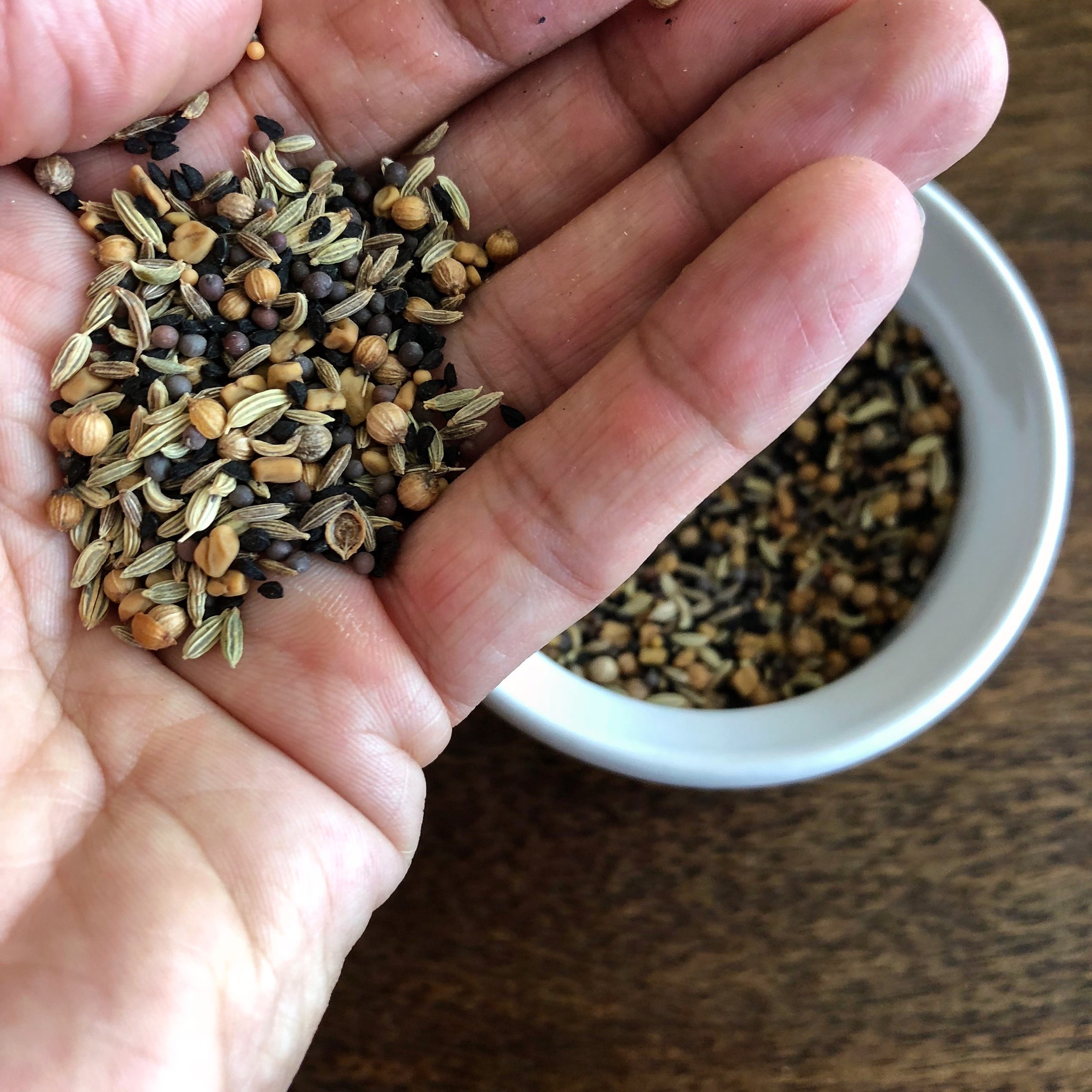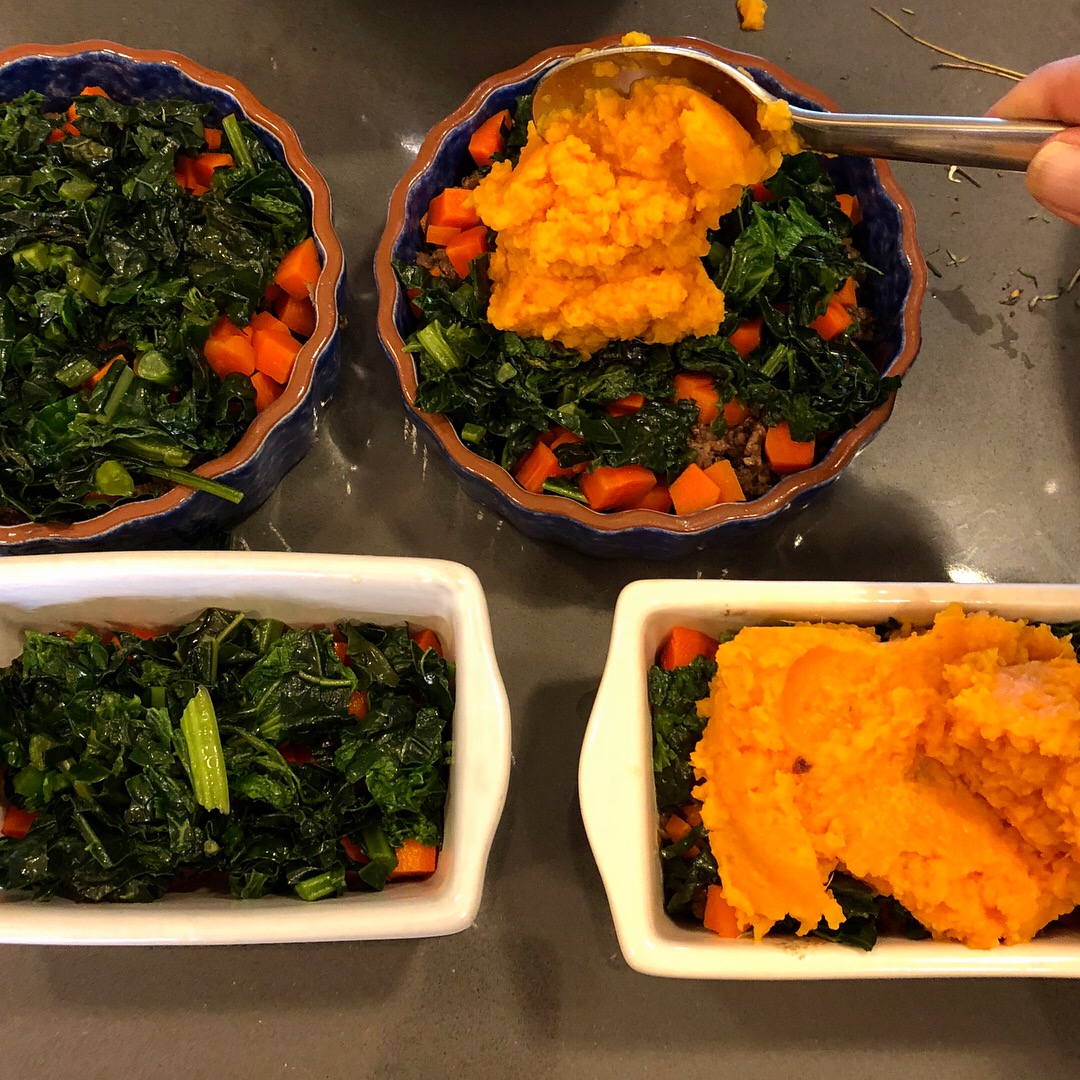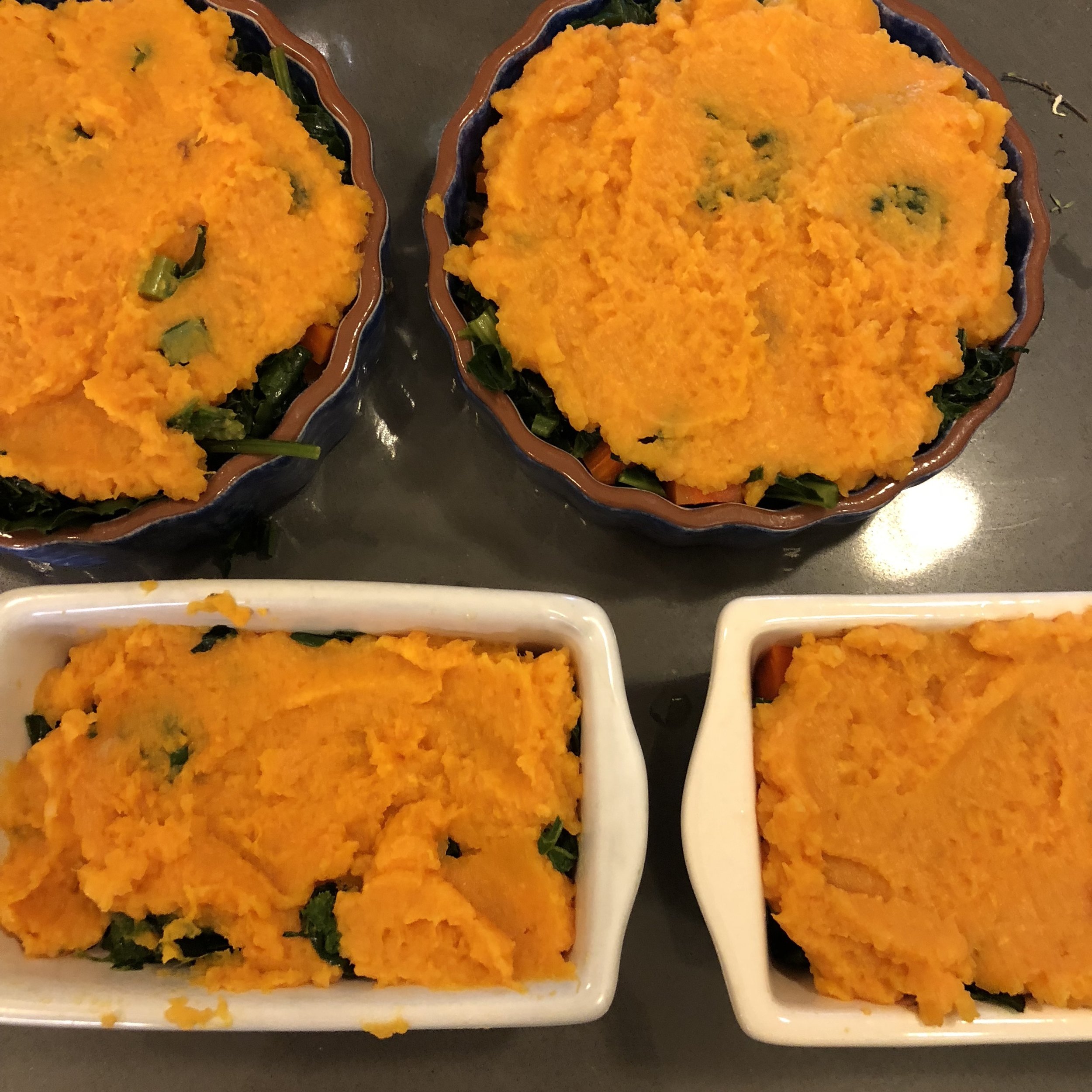My Shiitake Mushroom “Bacon” Lettuce and Tomato with homemade Cashew Mayo on a Collard Green Wrap is the summer recipe for those who need alternatives to the traditional elements of the BLT but still want to celebrate the tomato. Of course you can mix and match these elements - try a vegan or vegetarian version on your favorite bread or work your usual bacon into a collard wrap to keep it gluten free. Bottom line is, you have options and don’t have to skip the BLT this summer. Just don’t replace the tomato.
Herb and Olive Oil Sourdough Crackers
An excellent use of sourdough starter discard, these crackers are addictively crispy, with a cheesy and nutty tang from the sourdough starter. And they are versatile. I like this combination of rosemary, thyme and parsley with the olive oil, but sometimes swap a blend with a broader assortment of flavors like fennel and lavender. My son likes replacing the rosemary and thyme with smoked paprika, garlic powder and cumin seeds.
Baked Cauliflower Macaroni and Cheese
Cranberry Orange Compote
This cranberry orange compote is everything I like about homemade cranberry sauce and the opposite of everything I dislike about canned cranberry jelly. It’s chunky so that you can actually recognize the star ingredient. It maintains the bright sourness of the cranberries and bitterness of the orange rind. It’s subtly sweet without being cloying. It's 100% worth making your own.
Creamy Mashed Cauliflower with Garlic and Herb Pistou
Once you try creamy mashed cauliflower, you may turn your back on mashed potatoes for good. You’ll be the hero of the holiday feast, providing a light, healthful and vegan option that is still killing it with fall flavor. We recommend topping it with a fresh garlic, rosemary, parsley and thyme pistou.
Plump Pasta Pillows in 3 Preparations
While the shape of a gnoccho might resemble a knuckle or a small knot, the texture mimics a pillow - light, fluffy, and airy when prepared properly. Vegetables gently mixed into the dough along with flour and an egg help ensure this airiness. What follows is a method for preparing gnocchi with squash or pumpkin, sweet potatoes and beets, three ingredients in abundance all fall and winter long around here.
Spiced Summer Squash and Apple Bread with Crunchy Cinnamon Topping
When the yellow squash melts into the bread under cover of apple and spice, kids (and adults like me) don’t even realize they’re gobbling up the vegetable. This recipe combines the oddly matched produce of late September, as is to say, "hey, I know fall is right around the corner, but summer is not quite over yet." You don’t have to wait until October to spice this up like a decadent warming pumpkin loaf.
Rustic No Fuss Eggplant Arrabbiata
Arrabbiata is a spicy tomato sauce made with lots of garlic and chili peppers. Although it literally translates to “angry,” no one, unless perhaps Tom Brady, will be angry if you make this Rustic No Fuss Eggplant Arrabbiata for dinner tonight. This dish can be adjusted, with equally delicious results, to suit vegans, those who eat gluten free, and/or eaters who are allergic to eggs! Win-win-win.
The spicy kick is not the only thing setting this apart from your average eggplant parmesan or eggplant rollatini. Those traditional configurations of eggplant, sauce and cheese are much more particular, and I dare say, unnecessary. Admittedly, I appreciate an impeccable eggplant parmesan. And my mother’s meticulously rolled eggplant rollatini, held together by toothpicks before being baked in the oven might just be the inspiration for this dish. But here’s why this Rustic No Fuss Eggplant Arrabbiata should replace all of that…well…fuss:
No frying. No mess. No three step dredge resulting in a once-normal hand transformed into 5 breaded thumbs.
It can be made gluten free — easily. See #1. Toasted breadcrumb topping is 100% optional.
All plant. No egg. Since the eggplant is not breaded, we skip the egg dredge.
Mix and match or even omit (gasp!) the cheese. Fresh Mozzarella is a classic in eggplant parmesan and ricotta makes for a luscious rollatini, but here you can use either, both, add parmesan or pecorino romano, or leave out the cheese entirely. And thus (see #3), this dish can be made vegan without any of those questionable imitation vegan “cheeses”.
Any sized casserole or baking dish with high sides will work. This fuss free eggplant bake doesn’t require a perfect fit, normally forcing you to transfer the partially layered contents of your eggplant bake into another better fitting vessel, three times, creating a sink full of dishes before you’ve put anything in the oven.
No rolling. No toothpicks. Sorry to take away your fun, mom.
I’m sure there is a 7th reason and perhaps even an 8th, but I want to share this with you before eggplant season has passed.
Rustic No Fuss Eggplant Arrabbiata
Serves: 4-6
What You Need:
2 medium eggplant
1-2 teaspoons kosher salt, plus more to taste
4-5 tablespoons extra virgin olive oil, divided
red pepper flakes (crushed red pepper), to taste
1 cup ricotta cheese or 8 ounces fresh mozzarella, sliced or 3-4 tablespoons pecorino romano or combination
freshly ground black pepper, to taste
1-2 cups Quick Spicy Tomato Basil Marinara or your favorite version
1/2 cup bread crumbs (seasoned if you like), optional
What You Do:
Preheat the oven to 400 degrees.
If desired, peel the eggplant. (Note: I always leave the skin intact for color, flavor and nutrients but if you want your overall bite to have a more silky texture, peel the eggplant). Slice eggplant into 1/4 inch thick slabs (or rounds if that is your preference).
Lay the eggplant slices out in a single layer on the cutting board or baking sheets. Sprinkle liberally with kosher salt. Flip and sprinkle salt on the other side. Allow to sit for at least 10 minutes so that the moisture sweats out of the eggplant.
Using a clean kitchen towel, pat the eggplant dry. Flip and pat dry on the other side as well.
Transfer to a baking sheet and drizzle with about 2 tablespoons of extra virgin olive oil. Flip and drizzle olive oil on the other side. Sprinkle with red pepper flakes, if desired. Bake at 400 degrees for about 30 minutes or until eggplant is golden brown and crisp around the edges, flipping the eggplant slices and rotating the pan halfway through.
Meanwhile, in a small bowl, mix cheeses together with freshly ground black pepper.
In a baking dish with high sides, ladle a few spoonfuls of sauce, arrange about 1/4 of your eggplant slices in a single layer over the sauce. Dollop 1/4 of your cheese mixture across the eggplant slices. Repeat until you have used all of your ingredients, finishing with a layer of sauce on top. Sprinkle about 1/4 teaspoon of red pepper flakes on top, if desired.
Bake at 400 degrees for about 30 minutes or until cheese is bubbly and lightly browned around edges.
Meanwhile, in a small skillet over medium high, heat 1 tablespoon of olive oil. Add the bread crumbs and sauté, stirring frequently until lightly browned, about 4 minutes.
Remove eggplant from the oven, and top with the toasted breadcrumbs. Allow to cool 5 minutes before serving.
Frozen Lemon Custard
Pantry Clean-Out Granola
I’ve been baking my own granola for years now, usually inspired by the odds and ends I find when cleaning my pantry. It’s incredibly satisfying to empty the remnants of bags of nuts, a tub of dried mystery fruit, a jar of cinnamon, and a rubber-band wrapped package of quinoa in one fell swoop! In the process, I create a wide open pantry shelf AND breakfast of champions for weeks!
Armed with some photos I took during the recent production of 60 jars for a dear friend’s wedding, I’m finally putting this granola “recipe” on the Teaching Table blog.
As the air quotes suggest, this is barely a recipe but rather a set of suggestions and instructions for assembling goodness out of any combination of nuts & dried fruit, spice, seeds, oil & sweetener. Mix and match to create a personalized granola that suits your taste and needs (or uses what you find in the back of your pantry). You can even adjust the ratios of the dry ingredients. The amounts are relative — another vote for this solution to reduce food waste! Here’s a basic formula.
Tip: For an even crunchier granola, add 1 beaten egg white to the oats mixture.
Pantry Clean-Out granola
What you need:
Ingredients for Shannon & Dylan’s Signature (vaguely Morrocan) Granola.
2 ½ - 3 cups rolled (not instant nor steel cut) oats
½ - 1 cup whole grains such as quinoa, millet and amaranth
2 - 4 tablespoons seeds, such as sesame, chia and flax
1 - 2 teaspoons of ground spice, such as ginger, cinnamon, or cardamom, or powders like cocoa and matcha tea
½ - 1½ cups nuts, such as almonds, hazelnuts, walnuts, cashews and pistachios
½ cup oil (melted coconut, canola, hazelnut, pistachio, grapeseed, or olive oil)
⅓ cup sweetener in syrup form, such as honey, agave or maple syrup
½ cup dried fruit, such as raisins, tart cherries, apricots, figs, peaches or apples, ¼ inch dice
What you do:
Some of my favorite combinations:
All of these start with rolled oats…
walnuts + cinnamon + canola oil + maple syrup + dried apples
pistachios + almonds + cardamom + sesame seeds + coconut oil + honey + dried apricots
almonds + cocoa powder + nut oil (hazelnut, walnut) + agave + dried cherries
cashews + ginger + quinoa + coconut oil + agave + coconut flakes + dried mango
matcha tea powder + cashews + coconut oil + agave + golden raisins
walnuts + pistachios + cinnamon + quinoa + grapeseed oil + honey + raisins
What goes into your favorite mixture?
Almond Cookie Butter and Jam Cups in a Dark Chocolate Shell
Once, when diligently cleaning out my pantry, I stumbled upon a partial package of biscuits and the dried up remnants of a jar of almond butter (you know, the part left behind because I didn’t bother to evenly distribute the oils). And of course I had dark chocolate chips on hand. Determined to turn these scraps into something edible and pacify my junk candy craving, I whipped up confections suitable for a vacation-land ice cream shop, that can live in my freezer to be eaten on demand.
This recipe has gone through a few iterations to reach the perfect state it’s currently in. At first, I used mini tart shells and swirled the chocolate and almond butter filling together. While it created an artful design (see photo top right), it was much too large for one serving and too hard to cut into for sharing. My initial peanut butter cup inspiration did not include jam. But the richness of the almond butter and the bitterness of the chocolate called for something tart and sweet. Enter in: any type of jam you have on hand - my favorites for this are raspberry and strawberry. Finally, it was the students in my gluten free desserts class who suggested lining the sides of the muffin cup with a thin layer of chocolate to contain all of that almond butter gooeyness (see photo bottom right for earlier less refined yet photogenic version). Proof that even the best desserts can be made better.
Almond Cookie Butter and Jam Cups in a Dark Chocolate Shell
Makes: 9-12 candy pieces
What You Need:
5 teaspoons coconut oil, divided
½ cup plus 2 tablespoons finely crushed biscuit* crumbs
½ cup creamy almond butter
Pinch sea salt
8 oz dark chocolate
¼ cup jam (raspberry or strawberry recommended)
What You Do:
Line a small baking sheet with silicone muffin cups or mini tart shells (1½ - 2 inches in diameter).
Over a double boiler (or in a glass bowl in the microwave), melt the coconut oil. Set aside 2 level teaspoons of coconut oil to be added to the chocolate later.
Combine 2 teaspoons melted coconut oil, biscuit crumbs, almond butter and salt in the bowl of a food processor. Process until smooth. Add 1 teaspoon more coconut oil if needed to smooth out the mixture.
In the same double boiler or bowl in which you melted the coconut oil, melt the chocolate with the reserved 2 teaspoons of coconut oil. Whisk until smooth.
Drop about 1 tablespoon of the melted chocolate into the bottom of each cup and spread out, turning and tilting the cup so that the chocolate evenly coats the bottom of the cup and runs up the sides about half an inch. Freeze for 3-5 minutes.
Dollop approximately 1 tablespoon of the biscuit crumb and almond butter mixture on top of the chocolate base in each cup.
Dollop ½ - 1 teaspoon of jam into the center of each cup.
Freeze for 20-30 minutes or until jam is firm.
Top the cup with another 2-3 teaspoons melted chocolate (Reheat it over the double boiler first if it firmed up). Spread chocolate evenly across the tops of the cups. Freeze for 30 minutes before enjoying.
To Freeze:
After the cups have completely hardened, remove from their liners and transfer to a freezer safe bag or container. Store up to 6 months. But they will not last this long.
To Defrost:
Remove from freezer and allow to sit at room temperature for about 10 minutes before serving. Promptly return any uneaten portions to the freezer.
*Note about biscuits:
My favorite biscuits to use for these cups are the European graham cookies typically turned into speculoos. Biscoff works particularly well, but you can make these cups equally delicious with any sweetmeal or wholegrain biscuits that come in a cellophane tube (shown on the right), as well as gluten free graham cookies.
Chili Maple Glazed Squash with Runny Eggs
In my classes and conversations with many home cooks and those eager to become home cooks, I hear the same repeated request: Healthy. Easy. Meals. So here’s one of my favorites that meets this criteria and then some. As a sheet pan supper, you’ll only be washing one pan after you stuff your face with wholesome goodness. And since the incredible edible egg is the star protein, equally acceptable for breakfast, lunch and dinner (and of course BRUNCH), it’s easy on the wallet. The chili maple glaze turns the squash into crunchy on the outside, creamy on the inside, candy that even squash resisters can’t stop eating.
You can use any type of squash, but I find delicata or acorn work best in this dish, since the roasted skin is deliciously edible, upping the convenience and health factors (thank you, fiber). If butternut or another variety of squash is more readily available to you, go for it. Whichever you use, cut the squash into symmetrical crescent-shaped slices that can be ingeniously arranged to contain a cracked egg.
Make this for dinner on a weeknight. Make it for brunch and impress your friends. Make extra and put the leftovers inside a taco.
CHILI MAPLE GLAZED SQUASH AND RUNNY EGGS
Serves: 4 as a main dish
Acorn squash cut into crescent shaped slices and tossed in chili maple glaze before roasting.
What you need:
¼ cup maple syrup
2 tablespoons sesame oil
1 tablespoon grapeseed oil (or canola)
1 tablespoons apple cider vinegar
1 tablespoon tamari (or shoyu or soy sauce)
4 cloves garlic, peeled, minced or grated
1 inch piece ginger root, peeled, minced or grated
¼ - ½ teaspoon chipotle chili flakes, optional
½ teaspoon kosher salt
1 acorn or 2 delicata squash, about 2 pounds
8 eggs
2-3 scallions, sliced at an angle
2 teaspoons sesame seeds, toasted
Delicata squash after roasting, ready to get brushed with more glaze, and arranged for the eggs to get cracked on top.
Garnish with sesame seeds, sliced scallions and more glaze.
What you do:
Preheat the oven to 400 degrees and line a baking sheet with parchment paper.
Cut the squash in half lengthwise. Scoop out the seeds. Slice into ½ inch-thick crescent shaped slices. (Peeling delicata or acorn squash is optional.)
In a large bowl, whisk together the maple syrup, sesame oil, grapeseed oil, apple cider vinegar, tamari, garlic, ginger, and chipotle chili flakes.
Season the squash pieces with salt and add to the maple syrup mixture. Toss to coat. Set aside for 10 minutes.
Spread the squash in a single layer on the parchment lined sheet tray, reserving the extra glaze. Bake 25-30 minutes or until it is golden brown on the underside.
Remove the pan from the oven, flip the squash, brush with additional glaze and return the pan to the oven. Bake another 10-15 minutes or until squash is browned on both sides.
Arrange the squash so that two half moons create a circle with a well in the middle. Drop one egg into each well. Season with salt. Return the pan to the oven and bake 7-8 minutes or until whites are solid and yolks are cooked to your preference.
Garnish with toasted sesame seeds, scallion slices and more chili maple glaze. Serve immediately.
Spiced Sweet Potato Custard
Spiced Sweet Potato Custard
Make this custard merely because it is downright delicious — creamy, decadent, with a hint of spice and subtle sweetness, but if you should need to know, it is also gluten-free, grain-free, and without refined sugar. You could also make a few simple ingredient swaps to enjoy it without dairy. Adjust the level of sweetness to your taste — reduce the maple crystals or serve with additional maple syrup on top. Or omit the maple entirely and use whole pitted dates as your sweetener. We use leftover mashed or baked sweet potatoes, but sometimes swap those for pumpkin or butternut squash purée. Your food processor or blender combines everything to the perfect consistency in just a few minutes. All you have to do is wait (and fight off the aroma of maple and spices) while it sets to flawless satin in the oven. We eat this for breakfast, brunch or dessert (and 2-year-old Andy consumed multiple servings as a meal for weeks on end).
Some tips on making this dairy free custard:
Whip everything up in a food processor, blender or with immersion blender. Since there is no gluten, it’s hard to overdo it. The blending will simply make it all smoother. But if you create a lot of bubbles in the process, tap those out once you fill your ramekins.
A water bath or bain marie is a good idea if not a necessity (and not a particularly difficult one) for cooking custard to satiny smoothness. Don’t skip this. Before starting, simply find a baking dish large enough to hold your ramekins with space for some hot water in between. But don’t add the hot water until you've put your baking dish with filled ramekins into the oven and handle carefully to prevent water from spilling into the custard.
Maple crystals are the result of boiling all of the water off of the sap harvested from maple trees. Maple crystals, also known as maple sugar, are becoming increasingly easier to find wherever you buy pure maple syrup. If you can’t find maple crystals, turbinado and coconut sugar are your next best options in this recipe.
Freshly grate your nutmeg — it makes all the difference.
Whole nutmeg grated on a microplane
What you need:
2 medium sweet potatoes
5 tablespoons melted butter
1 cup heavy cream or half and half
¼ teaspoon whole cloves
6 cardamom pods
1 cinnamon stick
1 teaspoon ground cinnamon
¾ teaspoon freshly grated nutmeg, plus more for serving
½ teaspoon ground cardamom
½ teaspoon ground ginger
¼ teaspoon ground cloves
pinch of sea salt
¼ cup maple crystals (or turbinado or coconut sugar)
¼ cup maple syrup, plus more for serving
6 eggs
The custard is set when it no longer jiggles, except for a circle the size of a pinky fingertip in the middle.
What you do:
Preheat the oven to 375 degrees F. Scrub sweet potatoes. Bake on a sheet pan at 375 degrees for 45-60 min or until sweet potato is soft and mushy to the touch. Allow to cool for about 5 minutes. Peel the skins from the sweet potato and discard the skins. You should have about 1½ - 1 ⅔ cups mashed.
Reduce the oven temperature to 350 degrees F.
Brush 8-10 ramekins (3-inch diameter) with some of the melted butter and place them in a large baking dish with high sides.
In a small pot, heat the cream with whole cloves, cardamom pods and a cinnamon stick until just steaming.
In a food processor or blender, purée sweet potato flesh with ground cinnamon, grated nutmeg, ground cardamom, ground ginger, ground cloves and sea salt until smooth. Stop and scrape down the sides.
Add maple crystals, maple syrup, remaining melted butter, and eggs and process until smooth and creamy, about 2 minutes.
With the food processor or blender running, slowly stream in the cream.
Pour into prepared ramekins. Carefully pull out the middle oven rack about 4-5 inches. Transfer the baking dish to the oven rack. Pour hot water into the baking dish until it comes halfway to two-thirds up the sides of the ramekins. Carefully slide the baking dish and oven rack back into the oven. Try not to splash water into the custard. Bake for 23-26 minutes until custard is set. A tiny pea-sized circle in the center will jiggle just a little when done.
Remove from the oven. Then remove ramekins from the baking dish and transfer to a cooling rack. Allow to cool for at least 15 minutes.
Serve warm or chilled with additional maple syrup or dusting of freshly ground nutmeg if desired.
Optional: With a knife, loosen edges of custard and invert ramekin onto a plate. Serve with additional maple syrup and a dusting of freshly grated nutmeg.
Variations:
Dairy-free. Substitute melted coconut oil or olive oil for the melted butter. Use room temperature coconut milk in place of the heavy cream or half and half.
No maple sugar. Use whole pitted dates in place of maple syrup. Bring two cups of water to a boil. Pour the water over ¾ cup whole pitted dates. Soak for 10 minutes. Drain thoroughly. Incorporate the dates into the custard mixture in place of maple crystals and maple syrup.
Pumpkin or Squash. Use 1⅔ cups cooked or canned pumpkin or squash purée in place of the mashed sweet potato. Use this method to make your own pumpkin purée.
Single Custard. If you don’t have small ramekins, you can use any bakeware, ideally 9” round, to bake the custard in, such as a ceramic dish, springform pan or cake pan. You then need another larger baking dish with high sides to set it into to bake. Adjust baking time to 30-40 minutes.
Butternut Squash & French Lentil Stew
This blog post is a wee bit misleading. While I intend to give you a straightforward recipe for a hearty health-supportive one-pot wonder perfect to combat today’s winter chill from Florida to Maine and New York to Chicago, I’m also going to give you the tools to make countless plant-based stews out of any ingredients you’re craving or have on hand. If you’re just here for the Anti-Inflammatory Butternut Squash and French Lentil Stew, click the link for the no-frills version pronto. But if you want to know how to make stew for days, without eating the same one twice, read on… (illustrations coming some day soon).
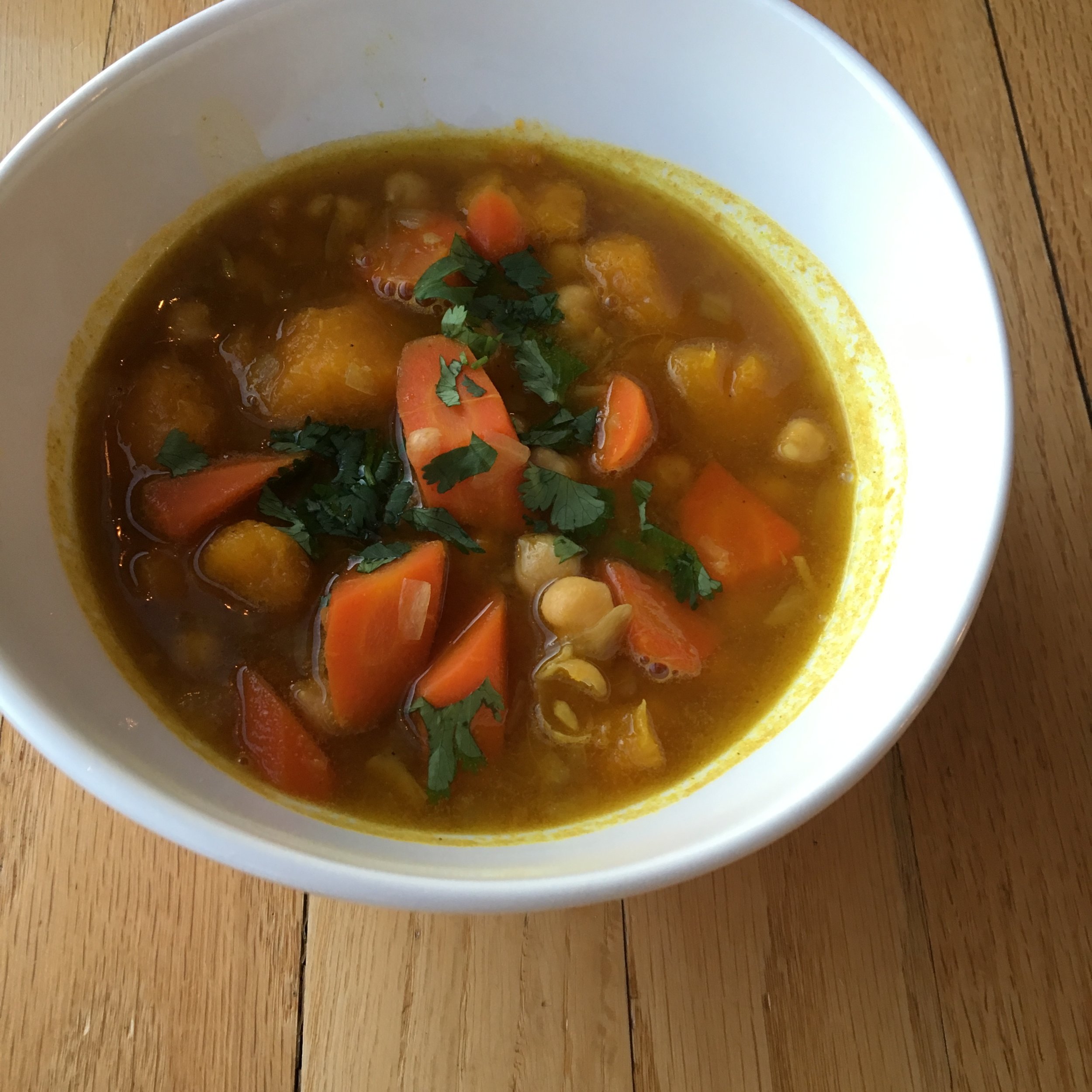
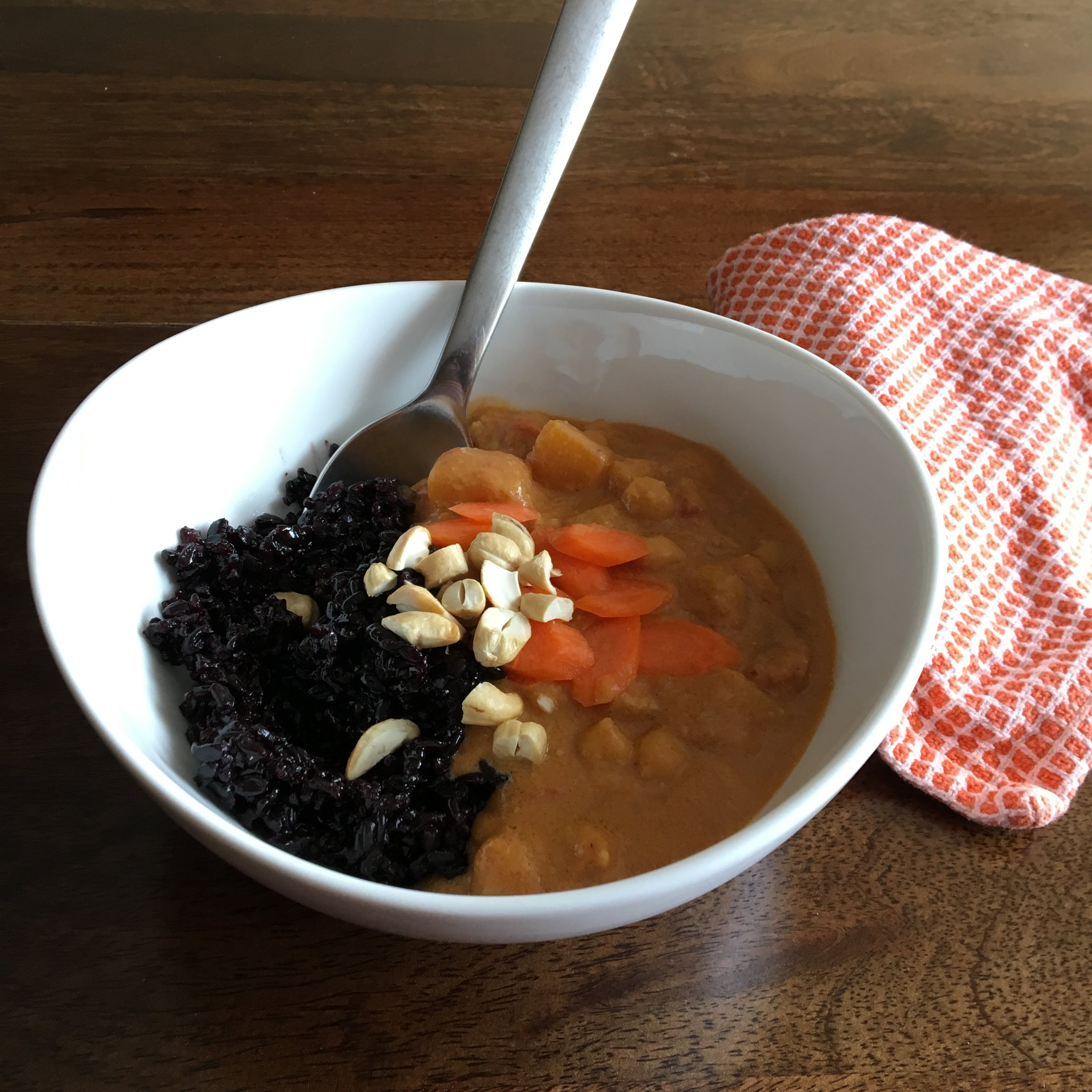

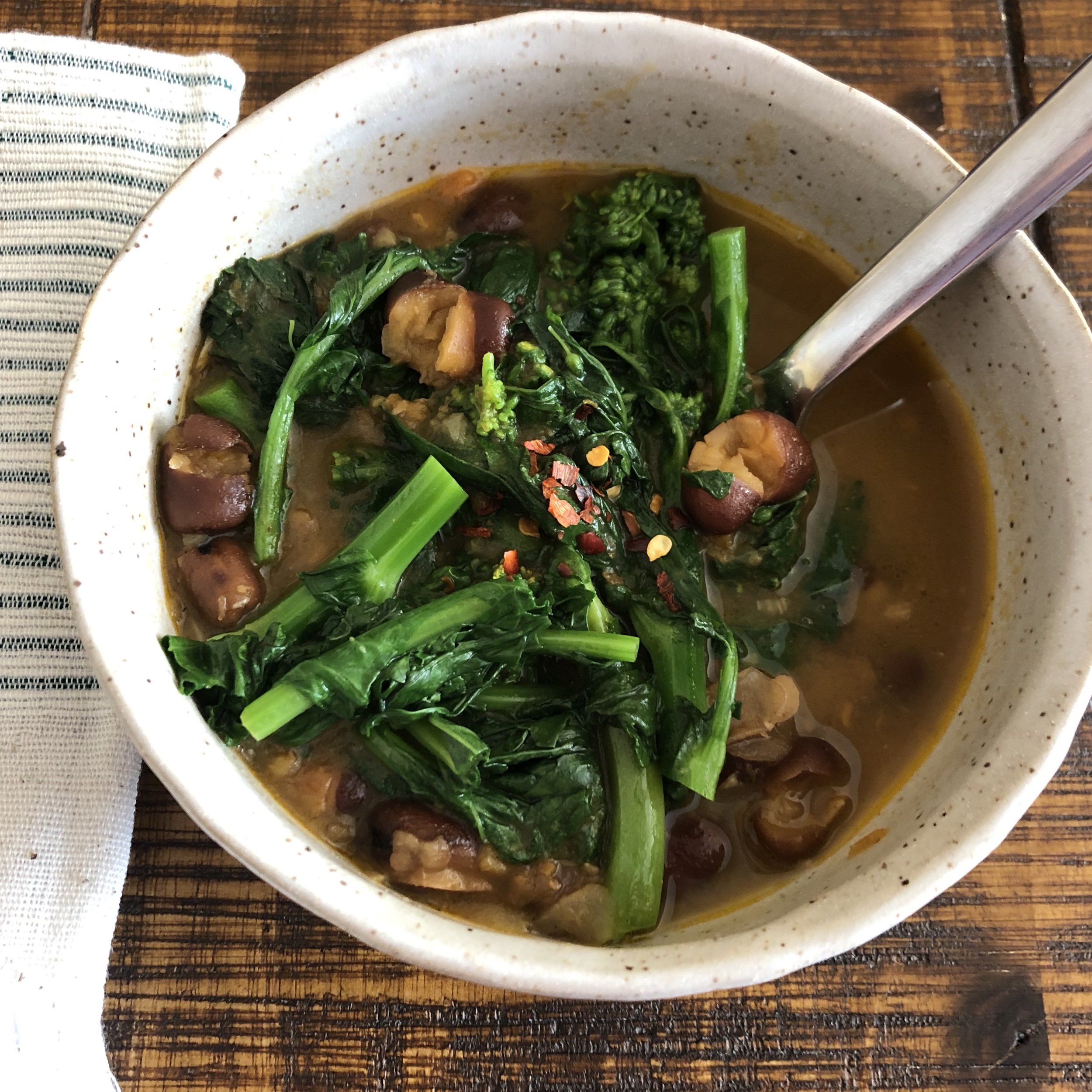
First, the formula for any Vegan Gluten Free Stew
What you need:
But Chef Laura, how do I know what pairs with what? I hear this question a lot. I leave with you a few tips:
what grows together goes together (seasonally, in the same parts of the country/world, etc.)
do a quick internet search for your ingredient in question and see what recipes come up not for the recipe itself but to see what others have paired with it
pick a genre or cuisine and choose ingredients to pair based on that cuisine’s classic combinations
and more you can read more strategies in this earlier blog on using what you have on hand.
Cooking oil (coconut, olive, canola)
Aromatics (ginger, garlic, onion, scallion, turmeric, chili peppers, etc.)
Salt (kosher or sea)
Dried spices
Pastes (curry paste, tahini, nut butters, tomato paste, etc.)
Liquids (water, stock, coconut milk, nut milks, juice, apple cider etc.)
Vegetables (raw, canned, frozen)
Cooked legumes (chickpeas, lentils, beans of all varieties, etc.)* or uncooked legumes but be sure to add sooner with more liquid or cook separately, then add
Acid and/or umami (lemon juice, vinegar, wine, soy sauce, umeboshi, tomato)
Greens and/or fresh herbs
What you do:
In a large stock pot, heat cooking oil over medium high heat.
Add aromatics and a pinch of salt. If using onion, allow to soften before adding other “smaller” aromatics like garlic to prevent browning or burning.
Add dried spices and seasoning and allow to bloom for a few minutes in the oil.
Whisk in paste(s). [You might add acid, like wine, at this stage].
Slowly incorporate liquid by whisking a small amount into the paste and then gradually adding 1-3 cups. Bring to a simmer.
Add vegetables that need the longest cook time. Bring back to a simmer. Continue to add vegetables in order of their cooking time. Add more liquid if needed or desired.
Add cooked legumes and simmer stew for at least 15-20 minutes more or up to 2 hours to incorporate flavors and reduce slightly. [You might add a touch of acid at this stage].
Just before serving, add any greens or fresh herbs, or simply top the plated stew with fresh herbs and greens.
Tips:
Add small pinches of salt at every stage.
If you don’t have/like an ingredient, leave it out or substitute something else from its category.
Cut vegetables into shapes and sizes that are appealing to eat relative to one another.
Amounts are relative -- add more of the ingredients you love, less of those you just want a taste of, and add as much liquid to get the consistency you want for your stew.
Add items that need to cook longer first such as carrots and those that cook quickly last, such as corn or frozen peas.
Now for the Soup du Jour:
Anti-Inflammatory Butternut Squash and French Lentil Stew
This hearty and flavorful stew highlights squash and fast-cooking french lentils. It’s spiced with Ras el hanout, a North African and Moroccan spice blend that means “head of the shop”. Ras el hanout is packed with anti-inflammatory agents, like ginger, turmeric and black peppercorn and delivers additional warmth with paprika, cinnamon and cayenne. Plant-based and lowcarb, this stew is thickened with tahini, the middle eastern staple made from ground sesame seeds. A bright finish of crisp spinach leaves and lemon juice give you everything you’re craving in one pot and 40 minutes.
Makes: 5-6 cups, serves 6-8
What you need:
½ cup french lentils
2 tablespoons olive oil
1 small red onion, diced
1 small yellow or white onion, diced
¾ teaspoon salt
3 cloves garlic, minced
1-2 tablespoons grated ginger root
2 - 3 teaspoons ras el hanout spice (purchased or see my recipe)
2 tablespoons tahini
4 cups low sodium vegetable stock
1 medium butternut squash, ¼ inch cubes
3 carrots, ¼ inch thick half moons
Juice of 1 lemon
1 bunch of spinach, about 2 cups leaves, torn
Freshly cracked black pepper
What you do:
Rinse the lentils and soak in a bowl of hot tap water for about 10 minutes (or until it is time to add them to the stew).
Heat olive oil in a soup pot on medium high heat. Add the onion and a few pinches of salt. Sauté until soft, about 3 minutes.
Add the garlic, ginger and a pinch of salt. Sauté about 1 minute longer.
Whisk in the spice mixture and sauté 30 seconds longer.
Stir in the tahini, and then gradually whisk in the stock in a slow steady stream, allowing it to thicken before adding more.
Strain the lentils and add them to the pot with the remaining salt. Bring to a boil, then lower heat to medium and simmer gently about 20 minutes.
Add the butternut squash and carrots and simmer an additional 10-15 minutes or until lentils, squash and carrots are tender.
Taste and season the soup with lemon juice. Add the torn spinach leaves, stir and heat just a minute or two until they wilt. Serve with additional lemon juice and fresh cracked black pepper, if desired.
Green Tomato Envy
As the longer days and warm weather winds down, the final baskets of heirloom red tomatoes and rainbow colored cherry tomatoes are available at farmer’s markets. Scoop them up while you can. However, you can rest assured that green tomatoes will appear over the next couple of weeks. I’ve got you covered for what to do with those green tomatoes - and it goes beyond frying ‘em.
Acknowledging their fate, I plucked quarts of green tomatoes from my tomato plants last weekend. They will never realize their potential colors promised on the seed packets. And that’s okay. I’m appreciative for the shorter days and cooler temps, especially when I dream up all of the good eats from these firm and punchy green ovals. I started with this tangy and spicy green tomato chutney. Over the weekend, we ate it with grilled pork chops, but it’s also delicious alongside this Bengali Red Lentil Dal or just slathered on bread.
Tangy and Spicy Green Tomato Chutney
Yield: 1 ½ - 2 cups
What you need:
4 cups green tomatoes, chopped into about ⅛ inch pieces
¼ cup sugar (I used turbinado or raw sugar)
2 teaspoons salt
3-6 serrano chilis, jalapenos or other small green chilis, halved, seeds removed & thinly sliced
2 teaspoons coconut oil (optional)
⅓ cup honey
1 whole star anise
8 cardamom pods
2 tablespoons to ¼ cup lime juice
What you do:
Combine the tomatoes, sugar and salt. Allow to sit for 30 minutes to 1 hour, stirring occasionally.
Strain the liquid from the tomatoes. Discard the liquid and transfer the tomatoes to a medium saucepan.
Add the sliced chili peppers, coconut oil, honey, star anise, and cardamom. Stir and bring to a boil. Reduce heat and simmer for 45 minutes.
Add lime juice to taste. Simmer another 10 minutes or until lime juice is reduced.
If chutney is not your jam, you might try these other ideas for an abundance of tomatoes, equally delicious with green tomatoes as well as their peak season rainbow colored cousins:
Emory enjoys arranging the bounty baskets even more than he enjoys picking produce from the garden
Here’s one of his arrangements.
Slow Oven Dried Tomatoes:
What you need:
tomatoes (any and all colors)
extra virgin olive oil
kosher salt or sea salt
garlic, dried oregano, dried basil, red pepper flakes (optional)
What you do:
Slice cherry and grape tomatoes in half.
Arrange in a single layer cut side up on a baking sheet. Drizzle with olive oil. Tip: If your olive oil comes out too fast or doesn’t drizzle nicely from the bottle, transfer some to a spoon or small liquid measuring cup and drizzle from that.
Sprinkle with kosher salt or sea salt.
Roast in oven at 200-225 degrees for at least 2 hours. Check at 2 hours. You want tomatoes to be shriveled and dried (see bottom photo on right). They should move easily around the pan when you shake it. Continue roasting, checking every 15-30 minutes until you reach this state. You can store in the fridge up to 3 weeks as is or in a jar of olive oil, with or without additional seasoning, like roasted garlic cloves, dried oregano, red pepper flakes or dried basil. You can also freeze the roasted tomatoes in oil for up to 6 months.
Tomato Jam:
I made a version of this sweet and spicy tomato jam, but I used about 3 lbs of tomatoes because that’s what I had. I reduced the amounts of other ingredients accordingly. In addition to tomatoes, my jam has ¼ cup apple cider vinegar, ½ cup Mike’s hot honey, ¼ cup orange blossom honey, ¼ cup turbinado sugar, ¼ cup white sugar, and ¼ teaspoon crushed red pepper. I basically followed the procedure and got 16 oz of jam (or four 4 oz ball jars). I want more! Increase the sugar if you use green tomatoes, unless you like a more tart jam.
Fresh Tomato Tart:
A classic tomato tart, like this one from Ina Garten is a beautiful picnic or fall potluck take along. Or try this one using green tomatoes that really seems more like dessert than a savory dish.
Fried Green Tomatoes:
There is no substitute for fried green tomatoes, so make some this weekend and share. I’m pretty sure I’m available. Call me. To make: Slice large green tomatoes into 1/4 - 1/2 inch thick rounds. Put them through a three step dredge: 1. Flour seasoned with salt and cayenne pepper, 2. Egg whisked with salt and black pepper, and 3. Coarse ground cornmeal (with more cayenne if you’re feeling spicy). Fry in canola oil until golden brown on each side, remove and set on paper towels to drain, and sprinkle with salt immediately.
Just a chef showing off her tomatoes, and getting some sun on her guns.
Masala Chai Latte Ice Cream
I had just made a large batch of my masala chai tea latte when I remembered that I was about to go out of town for a while. There was no way I would drink it all before leaving for my trip. My first thought was “oh no, chai latte down the drain.” But my second thought, with a mischievous smirk, was “there’s only one thing I can do about this situation”. I promptly put the ice cream machine bowl into the freezer and began turning that chai into an ice cream base.
I consulted my go-to guide in ice cream making, local favorite Ample Hills Creamery cookbook. Their Walt’s Dream base and overall ice cream making instructions were a fantastic starting point for this batch of Masala Chai Latte ice cream. One great tip provided by Ample Hills is to use skim milk powder in place of some of the milk. They consider it their secret ingredient because it provides creaminess without adding too much water, which would lead to dreaded ice crystals. It’s perfect when making an ice cream from a mixture already containing a bit of water, like tea. If your grocery store doesn’t sell skim milk powder, you can easily buy it online.
So, if you ever find yourself with an excess of chai latte (ah, when does that ever happen?) you can quickly churn that into a creamy caffeinated frozen treat. Or you could also make yourself a batch of masala chai, drink a cup with a friend and use the remainder for this sweet & spicy afternoon pick me up. To me, it’s like coffee ice cream but way better! It pairs nicely with a sugar cone, oat cookies or biscuits, but can also make a decadent sundae with hot fudge, whipped cream, and bruléed peaches.
What you need:
2 cups prepared masala chai latte, strained, chilled or hot
1/4 cup turbinado sugar
1/2 cup dry non-fat/skim milk powder
1 1/2 cups heavy cream
3 egg yolks
What you do:
As per the instructions of your ice cream maker, put your ice cream bowl into the freezer to chill.
Pour prepared masala chai latte into a medium saucepan and whisk in the turbinado sugar and milk powder until they are fully dissolved and there are no lumps. Stir in the heavy cream.
Heat mixture over medium high heat until it just begins to steam, about 5 minutes (or when temperature on instant read thermometer reads 105 degrees). Turn off the heat.
In a bowl, whisk the egg yolks while simultaneously streaming in about 1/2 cup of the hot chai mixture in a very slow drizzle.
Slowly whisk this egg yolk mixture back into the pot. Heat on medium low heat until mixture thickens to coat the back of a rubber spatula and tiny bubbles appear (or when temperature on instant read thermometer reads 165 degrees) about 7-10 minutes, stirring frequently.
Remove from heat and set pot into an ice bath (a larger pot or container filled with ice water). Alternatively, transfer the hot mixture to a heat proof bowl or pitcher to place into ice bath. Avoid getting ice and water into your ice cream mixture. Chill in ice bath for about 20 minutes, stirring every 4-5 minutes.
Strain mixture through a mesh strainer to remove any lumps and transfer to a container with a tightly fitting lid. Chill in the refrigerator for 6 hours, or until your ice cream machine bowl is ready, or up to 3 days.
Freeze in your ice cream machine according to the machine's directions.
New England Corn Chowdah
I'm from New England. This IS how you say it and spell it.
Here’s a recipe for a New England classic made vegetarian and gluten free. Of course, you can still use bacon for the extra richness or add lobster for a decadent summertime delight. See variations below. A traditional chowder might use a roux -- equal parts butter and flour cooked to a paste -- for thickening, but I’ve found that a purée of fresh corn kernels plus potatoes cooked down into the broth create the exact same result and help the chowder maintain it’s fresh light consistency rather than becoming gelatinous. Note: this chowder will also work well with leftover previously cooked corn on the cob. Just remove kernels from cobs and use both as if they were fresh. You might not extract as much flavor from the previously cooked cobs and the kernels won’t be as crunchy in the chowder but it’s certainly a great use for leftover corn on the cob.
What you need:
5 ears of corn
1 bay leaf
3 teaspoons sea salt, divided
2 tablespoons olive oil or unsalted butter, plus more butter for serving if desired
1 onion, medium dice
4-5 medium red potatoes, small dice
¼ teaspoon dried thyme (optional)
pinch cayenne pepper (optional)
3 cups half-n-half, whole milk or combination
¼ cup fresh thyme leaves (from about 6-7 sprigs)
1 teaspoon minced parsley leaves
black pepper to taste
What you do:
1. Cut corn kernels from cobs. Using the back of your knife, scrape the remaining kernels and juices from the cob. Set aside.
2. Boil 3 cups water with 2 teaspoons sea salt and add cobs (with kernels removed) and bay leaf. Simmer for 10 minutes. Drain and reserve liquid. Discard the cobs and bay leaf.
3. In a soup pot, heat the olive oil on medium high heat until it shimmers. Add diced onion and a pinch of salt and sauté until soft, about 3 minutes.
4. Add potatoes, another pinch of salt, dried thyme, and cayenne if using, and reduce heat to medium. Cook for about 5 minutes or while you prepare the liquid.
Blend about 1/3 of the fresh corn kernels with stock (or water) before adding to chowder to create a sweet and creamy base. (see step 5)
[yup, my dad's jar of corks in the background]
5. Put about a cup of the reserved corn stock and 1 cup of the corn kernels into a blender. Blend until smooth. Alternatively, you could just add the corn kernels to the liquid in a large measuring cup and purée with an immersion blender. Add this liquid to the pot and simmer for about 20 minutes or until potatoes are very tender. Season to taste with salt and black pepper.
6. Add remaining corn kernels and cook for about 4 minutes.
7. Add milk and thyme, and warm until liquid just begins to steam. Be careful not to boil the milk. Season to taste with salt and pepper. Serve with an additional pat of butter, if desired, and minced parsley leaves.
Variations:
With Bacon: At step 3, render the bacon until crispy in the soup pot. Remove bacon strips and lay on paper towels. Drain excess grease so that you are left with about 2 tablespoons in bottom of pan. Sauté diced onion in the 2 tablespoons of bacon fat and continue with recipe. Add roughly chopped bacon bits to the chowder just before serving.
With Lobster: At step 7, add previously cooked and shelled lobster meat, cut into bite sized pieces, with the milk and thyme.
To freeze: After adding the corn in step 6, remove from heat and allow to cool. Freeze the partially finished chowder at this point. To reheat and finish, simply defrost in the fridge or in a pot over low heat. Bring to a simmer and ensure potatoes are heated through. Add milk and thyme and continue with step 7.
Summer Succotash - New England Style
It does not get more American than succotash, one of the first dishes Native Americans shared with settlers. The word, meaning "broken corn kernels" comes from the Narrangansett people, who lived in the area that is now Rhode Island. There are many ways to make succotash and an American southerner might eloquently debate a Yankee on both contents and process. I favor the New England variety, with a few tweaks, but also just assumed succotash translated to "every vegetable from the garden" or "the entire contents of your produce drawer dumped into a skillet."
Succotash is the whatever you have at the time kind of dish. Actually -- and perhaps I should put this into the procedure itself -- when making succotash, I open all drawers of my fridge, hunt behind jars and open every container of leftovers, stacking every possible vegetable that can be used on the cutting board along with the tomatoes ripening on the counter. As far as I'm concerned, the only required ingredient in summer succotash is fresh local sweet corn previously cooked or raw. The others you can take or leave or substitute, depending on what you have and what you like.
New England Summer Succotash
Yield: Serves 4-6
What you need:
2 tablespoons extra virgin olive oil or butter
1 onion
sea salt or kosher salt
dried ground spices (e.g. smoked paprika, garlic powder, cayenne, optional)
2 sweet peppers (any color bell, anaheim, cubanelle)
3-5 cloves garlic
1 cup beans (see note)
2 medium zucchini or summer squash
2-3 cups fresh corn kernels*
1/4 cup water
1-2 medium tomatoes or handful of cherry tomatoes
1-2 tablespoons fresh herbs (thyme, parsley, basil, oregano, chives, rosemary), chopped
What you do:
Cut all vegetables into a similar size and shape.
Heat a large heavy bottomed skillet (cast iron if available) over moderately high heat. Heat the oil or butter and add the onion with a few pinches of salt. Sauté until soft and lightly browned, about 5-8 minutes.
Add spices if using and sauté about 1 minute.
Add the peppers, garlic, a pinch of salt and sauté until peppers are softened.
Add fresh beans (if using), zucchini and corn kernels with a few more pinches of salt. Sauté 1-2 minutes. Add the water and cook until liquid is absorbed.
Add the tomatoes and cook until they break down. Add cooked dried beans if using.
Right before turning off the heat, add the fresh herbs.
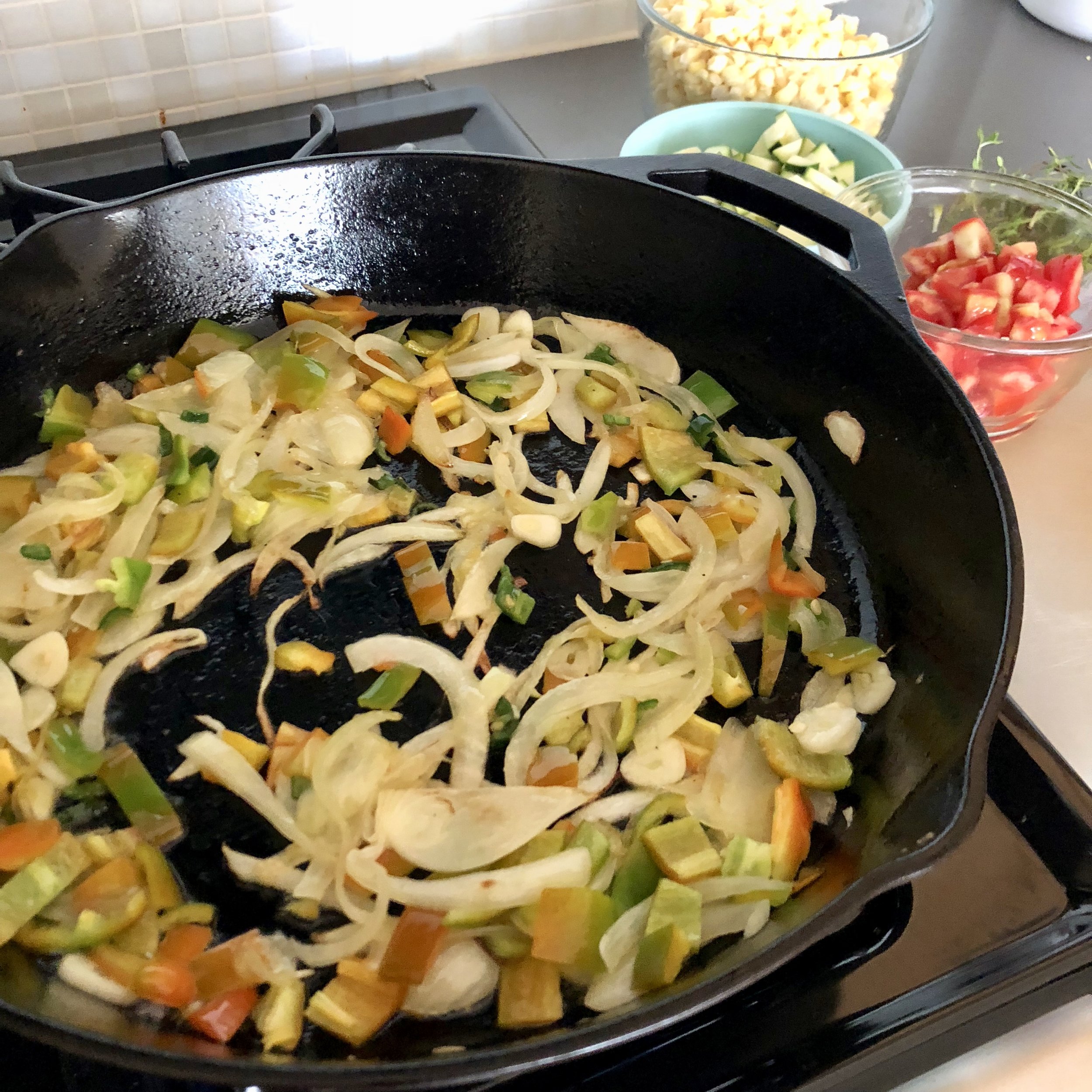
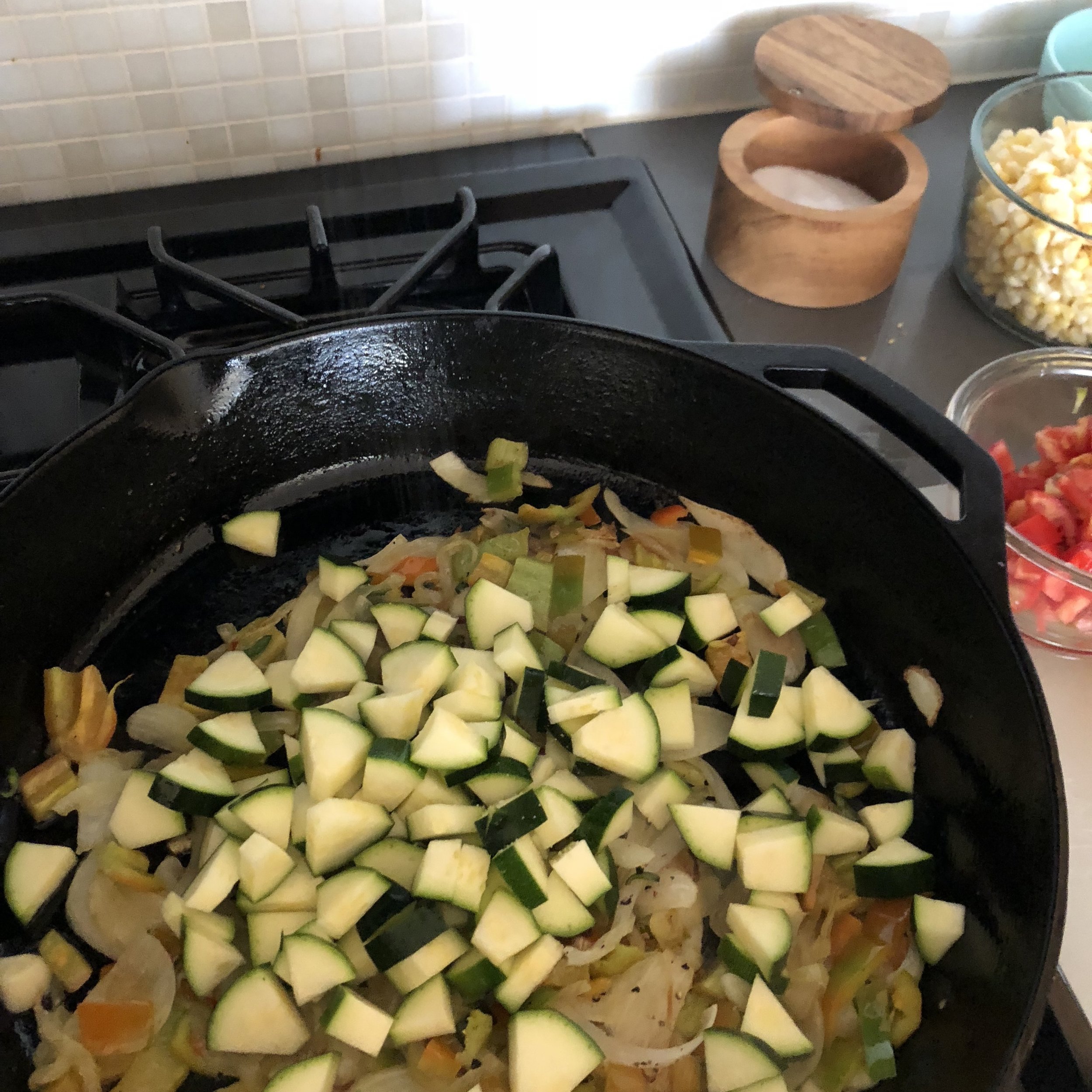


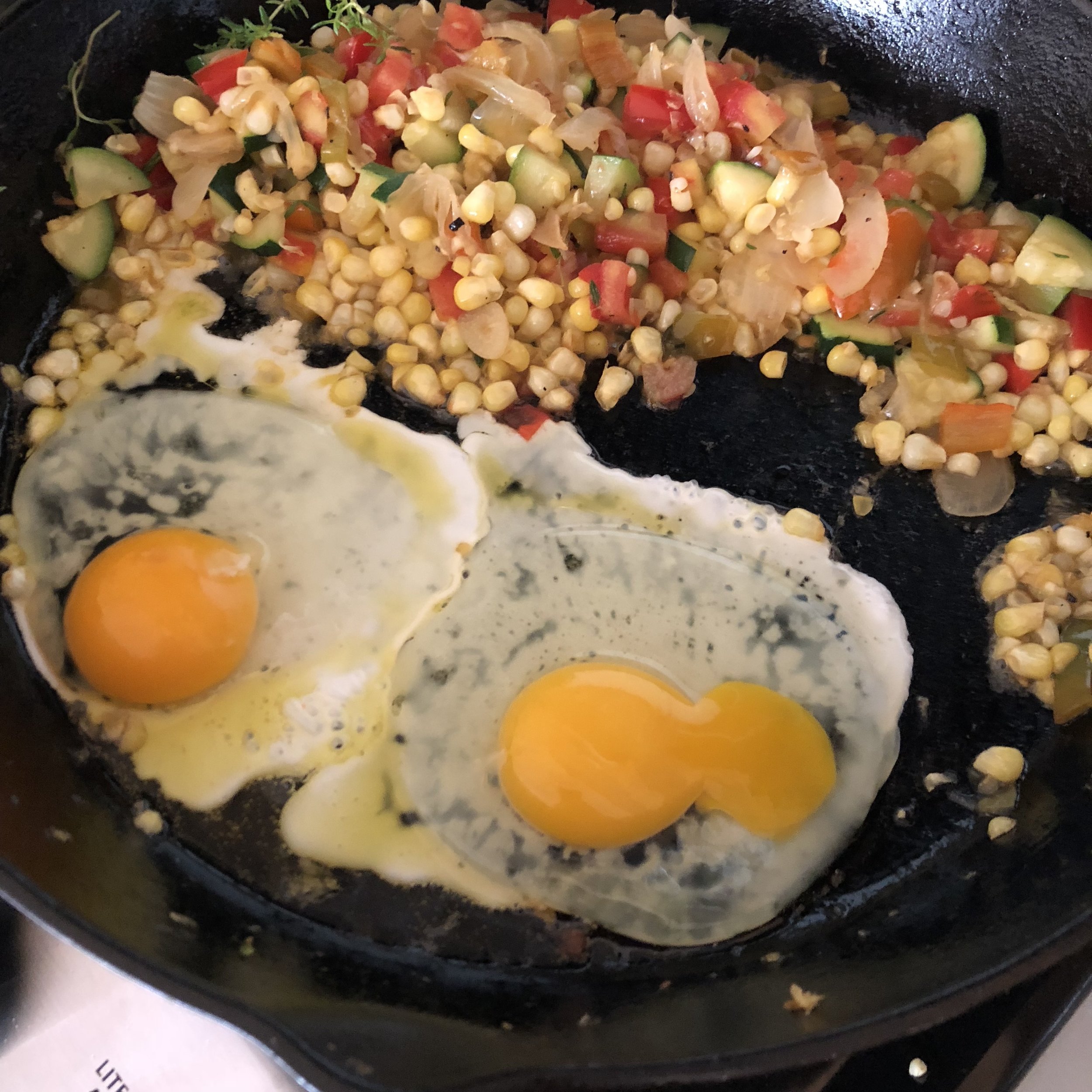
Note on beans: Traditional New England succotash uses cranberry or "cattle beans" like the ones pictured here. See that beautiful cranberry color marbled throughout? If you can get fresh cranberry beans straight from the shell for your summer succotash, that is ideal. Or substitute fresh shelling peas, snap peas, green beans, or lima beans. You can also cook up the dried ones, like you make any dried bean and add to the succotash at the very end.
Variations:
Use leftover already cooked vegetables, such as corn boiled on the cob or grilled zucchini and squash. Simply reduce the cooking time for the already cooked vegetables. Add them to the succotash a little later than the recipe calls for, omit the water and reduce the salt.
Serve the succotash as a brunch hash topped with crispy fried eggs. Push the succotash to the side, add a touch more oil and fry the eggs in the same skillet.
In place of tomatoes, try a tablespoon or two of apple cider vinegar or other vinegar.
Use salt pork or bacon for the fat. Render the fat in step 2 in place of oil or butter. Add the onion to the rendered fat and bacon pieces.
Crisp up small slices of dry salami in the oil. Remove before adding the onion, set aside and return to the dish at the end.
Bengali Red Lentil Dal
Do you need an "I've been out of town all weekend and have nothing in my fridge but want to put a healthy meal on the table pronto and have lunch for the week" kind of dish? For me, that dish is my 100% plant-based and pantry-sourced dhal and rice. It also get cheers from every single eater in my family. We make different variations of dhal, changing up the lentils, spices, aromatics and even the oil, but this Bengali Red Lentil Dhal cooks up quickest and uses the fewest ingredients. If you have them handy, you can brighten it up with chopped fresh tomatoes, cilantro leaves and slices of serrano or jalapeno peppers, luckily all things available from the garden this time of year. But those additions are not even necessary.
I have my Bengali-American friend, Ritu, to thank for this recipe. She taught it to me years ago before [tear] moving West. This dish comes closest to replicating the staple meal I ate daily while studying abroad in Nepal, half a lifetime ago. My quest for mastering dhal-bhat ended when Ritu showed me the ropes and her mom's recipe. While I'm at it, I guess I should also thank Ritu for providing fierce competition in office cooking challenges, forcing me to step up my game, and ultimately propelling me to culinary school.
What is dhal exactly? The word dhal comes from Sanskrit meaning "to split" and refers to a wide array of lentils, peas and beans (or pulses) that can be used to make dhal. But what distinguishes dhal from any other lentil soup or stewed pot of legumes is the tarka or tadka. This hot aromatic oil seasoned with onions, garlic, ginger, chilies, and toasted and ground spices is added to the cooked lentils toward the end of the cooking and adds dramatic flavor, color, digestive fire, and healing properties to the dish.
BENGALI RED LENTIL DAL
Yield: ~5 cups
What you need:
Panch Proon translates to "five spice" and includes equal parts fennel seeds, cumin seeds, whole fenugreek, black mustard sees and nigella (onion or black carraway) seeds. My panch proon blend is featured here with coriander seeds also used in this dhal.
The dhal:
2 cups red lentils
4 - 5 cups water
½ teaspoon kosher or sea salt
The tadka:
2 tablespoons panch proon (see left)
1 teaspoon coriander seeds
2 tablespoons ghee or coconut oil
1 onion, small dice
3 cloves garlic, minced
3 tablespoons ginger, julienned
1 dried kashmiri chili, chopped, optional
1 tomato, chopped, optional
Sea salt to taste
The garnish:
Cilantro leaves
1 jalapeno or serrano chili, minced
1 tablespoon ginger, thinly sliced
What you do:
Soak the lentils in a large pot of cool water for a minimum of 20 minutes (optional). Rinse thoroughly until water runs clear (not optional). Return the lentils to the pot and cover with 4-5 cups water.
Bring the water to a rolling bowl, add the salt, reduce heat and simmer until lentils are tender.
In a separate sauté pan, toast the spices until fragrant and lightly browned, about 30 seconds. Remove from heat. Allow to cool and then grind coarsely in a spice grinder or mortar and pestle.
Make the tadka. In the same sauté pan, heat ghee or coconut oil over medium high heat. Add the onions and a pinch of salt. When onions are soft, add the garlic, ginger, chili and ground spices. Sauté about 1 minute longer.
Pour tadka into dal. Add the diced tomato, if using. Simmer an additional 10 minutes or up to 2 hours. Thin dal with additional water if needed.
Garnish with cilantro leaves and jalapeno. Serve with spiced brown basmati rice.
Scallion Surplus Solutions
Why am I writing about scallions? It's not merely to highlight my alliteration abilities. I was recently reflecting on the fact that many of my spring recipes include a sauce that purees scallions beyond recognition. Each spring, I find myself with a surplus of scallions. Not one to gobble raw onions of any variety, these beautiful green alliums pile up in my fridge. Before they can wilt however, I whip them into a marinade or sauce. Some marinades get put to use immediately and others are stored in my freezer, with or without protein for a quick fall or winter meal.
Here are seven solutions for your scallion surplus followed by my recipe for Spring Jerk Marinade to be used in Jerk Lamb Shepherd's Pie (featured below) or to marinate some chicken wings or tofu steaks. All other recipes will be featured on the blog eventually or write and I'll send you the no-frills version pronto.
Korean Beef Marinade
Shrimp Scampi
Scallion Pancakes
Scallion Tart or Pizza
Salsa
Cheese and Scallion Biscuits
When all else fails, add them to a crudité platter for dipping or drizzle with olive oil and grill.
Now on to the piece de resistance. I can't get enough of this jerk marinade and once you try it, you'll be making it in big batches again and again as well. This spring jerk marinade came about because two of the earliest plants available to me in the northeast are thyme (which often survives the winter and regrows on its own) and scallions. Add some ginger, garlic, spices, and of course habañero chili peppers into the food processor and you are good to go.
My jerk marinade has countless uses -- the expected chicken wings, marinating grilled vegetables and tofu, but my most unexpected and new favorite discovery has become Jerk Shepherd’s Pie. This creation was born out of a freezer clean out where I discovered some sautéed mixed greens, about a cup of jerk marinade and a 1lb package of ground beef. The resulting creation screams British pub food meets Caribbean beach BBQ. I since replaced the beef with ground lamb and have interchanged sweet potatoes for the red potatoes & yukon golds. If you use sweet potatoes or yams, I recommend baking those whole to soften them before mashing as boiling or steaming will add too much moisture.
Spring Jerk Marinade
Yield: ~ 4 ½ cups marinade
What you need:
2 shallots or small spring onions, about ½ cup large dice
20 garlic cloves
1 bunch scallions, top ⅓ of green removed, roughly chopped
4 inch piece fresh ginger, peeled & roughly chopped, about ¼ cup
½ cup brown sugar
½ cup canola oil
6 tablespoons tamari soy sauce or shoyu
½ cup lime juice, approximately 4 limes
2 bunches (1 ½ ounces) fresh thyme, leaves and tender stems only, approximately ½ cup
4-8 habanero peppers
5 tablespoons ground allspice
2 teaspoons cinnamon
1 teaspoon freshly ground pepper
1 tablespoon kosher salt
¼ cup water
What you do:
Put all ingredients, except the water, into the bowl of a food processor or blender. Process on high until completely pureed.
Add water 1 tablespoon at a time, until it is the consistency of a runny sauce.
Taste and adjust seasoning as needed. Be judicious with the chili peppers. The heat level will intensify over time.
Jerk Lamb Shepherd’s Pie
Yield: Serves 6
What you need:
3 red or yukon gold potatoes, about 1 ½ cups cut into ½ inch cubes
Kosher salt
2 tablespoons butter (optional)
3 medium carrots, small dice
1 - 2 tablespoons olive oil or canola oil
1 bunch cooking greens, chopped (such as mizuna, chard, kale, mustard greens)
1 lb ground lamb (or beef)
1 - 1 ½ cups jerk marinade (above)
What you do:
Place the cubed potatoes in a large stock pot and cover with cool water. Add a generous handful of kosher salt. Bring to a boil, lower heat to medium and cook until potatoes are fork tender. Drain. Using a ricer or potato masher, mash the potatoes, adding butter if desired.
In a medium pot fitted with a steamer basket, add water to just above the basket. Bring to a boil. Add the carrots and a few pinches of kosher salt. Steam until the carrots are tender but still firm, about 5 minutes.
In a large skillet, heat oil on medium high heat. Add the chopped greens and a pinch of salt and sauté until they are soft. Remove greens from pan and set aside.
Using the same skillet, heat another tablespoon of oil. Add the ground lamb, breaking it up with a spoon until you have ½ inch crumbles. Season with salt and freshly ground pepper and sauté until cooked through.
Add the jerk marinade to the lamb. Cook about 5-7 minutes until the marinade is absorbed into the lamb and the lamb breaks down further into smaller crumbles.
Preheat the broiler. In an oven- proof casserole dish, layer the lamb, followed by carrots and greens and top with the mashed potatoes.
Heat under the broiler on high for about 12 minutes or until the top is lightly browned and crisp.
To Freeze: Wrap casseroles tightly with plastic wrap. Label with contents and reheating instructions.
To Reheat: Thaw overnight or for at least 12 hours in refrigerator. Preheat broiler. Remove plastic wrap and broil under high for 12-15 minutes or until the top is lightly browned and crisp and the center is warmed.
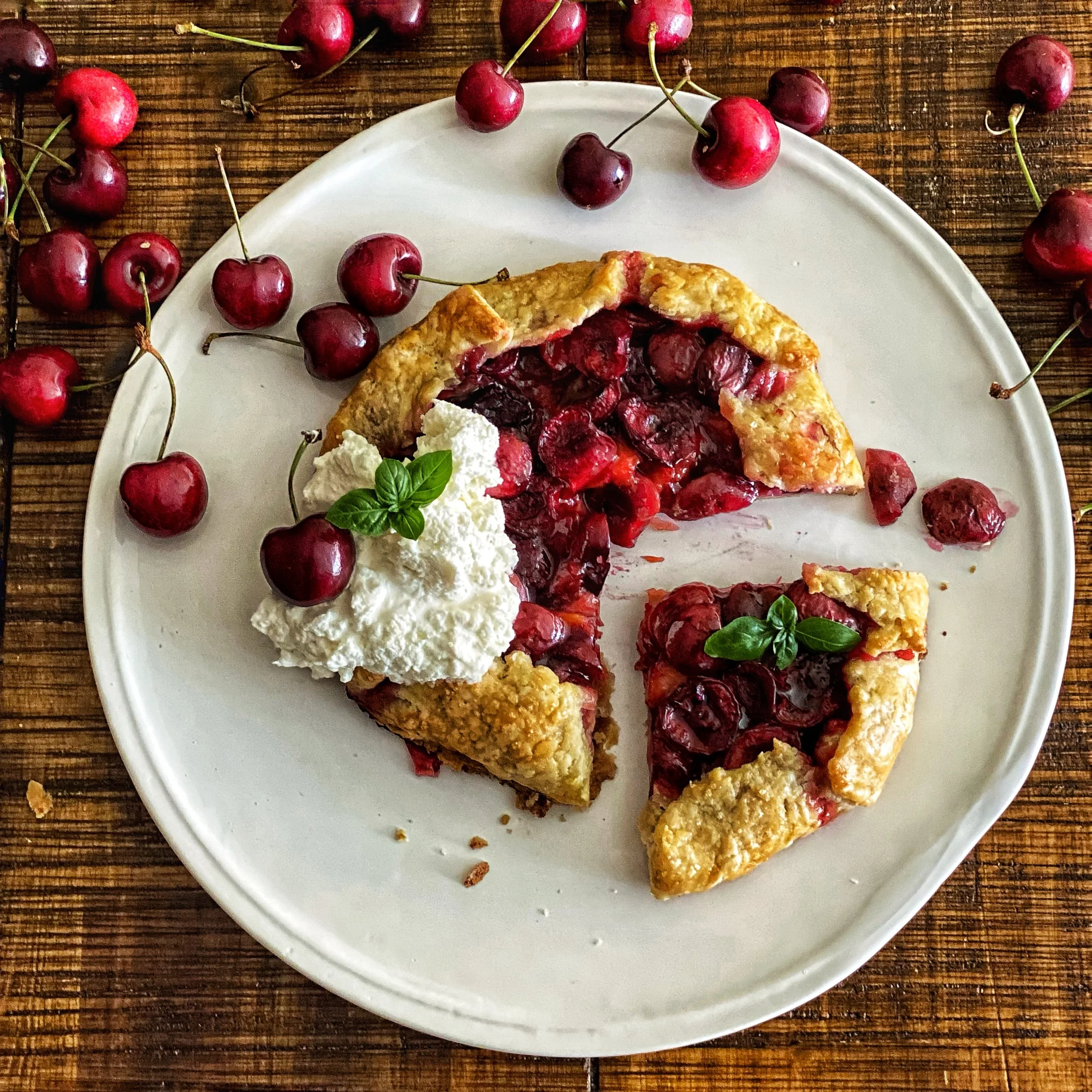
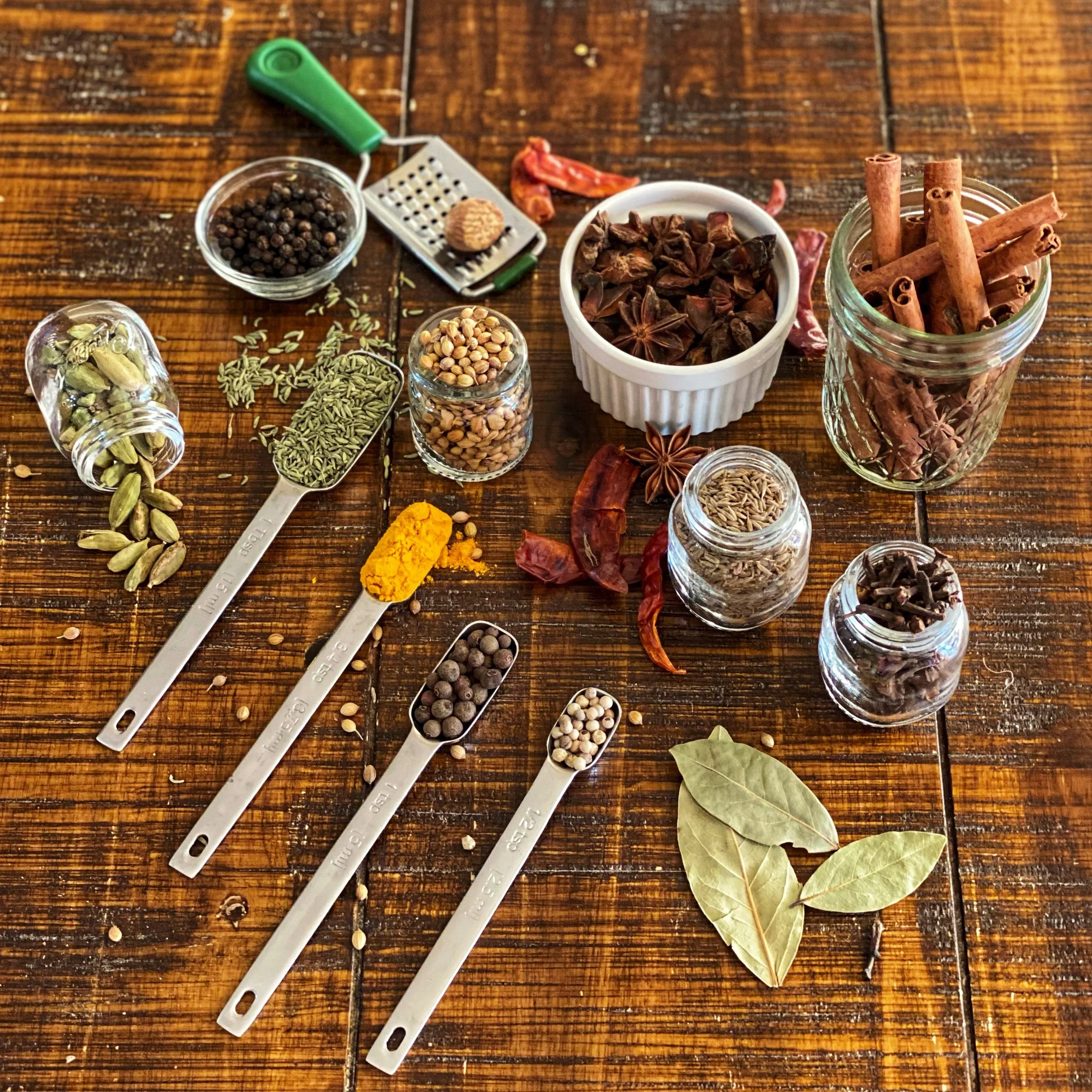
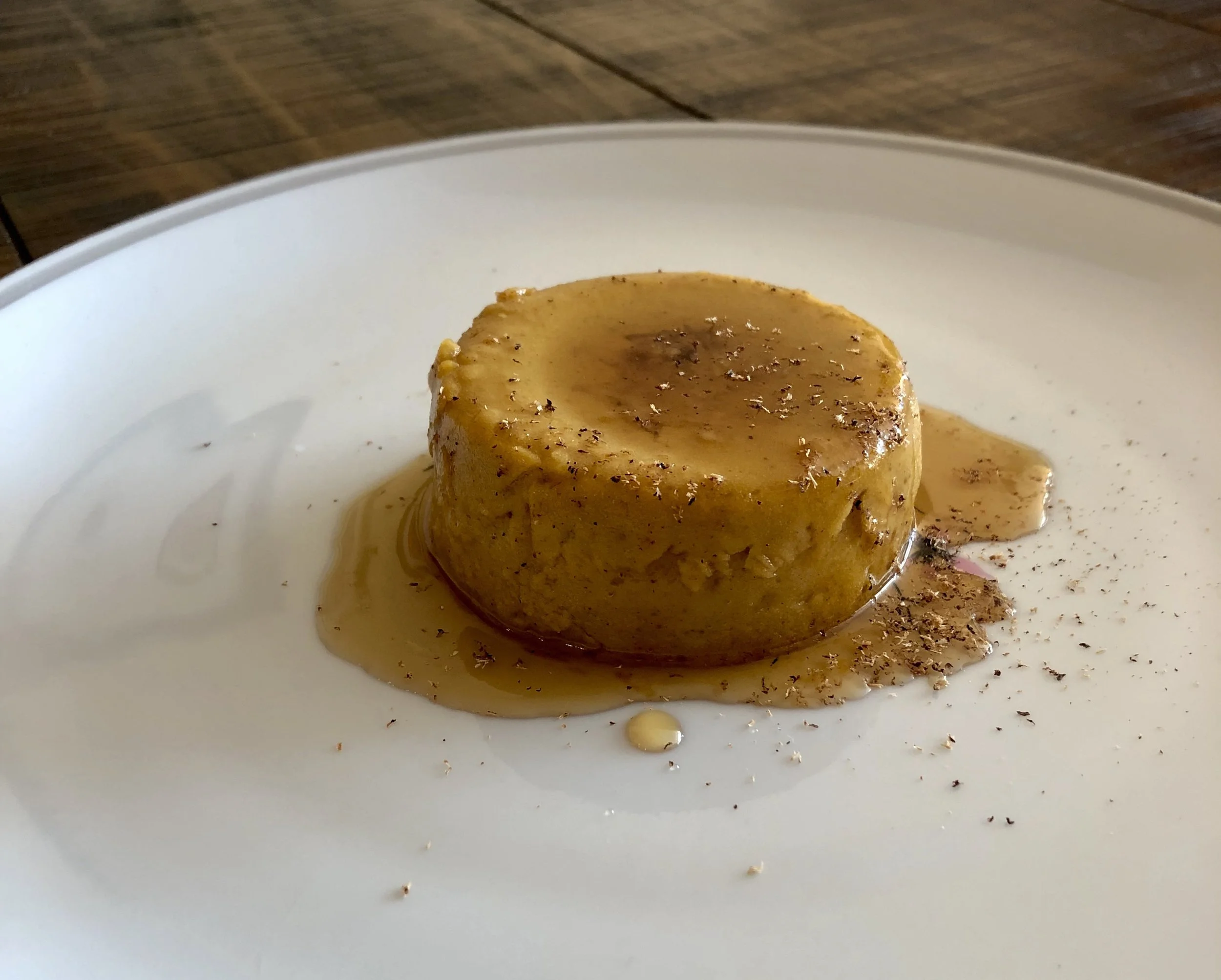
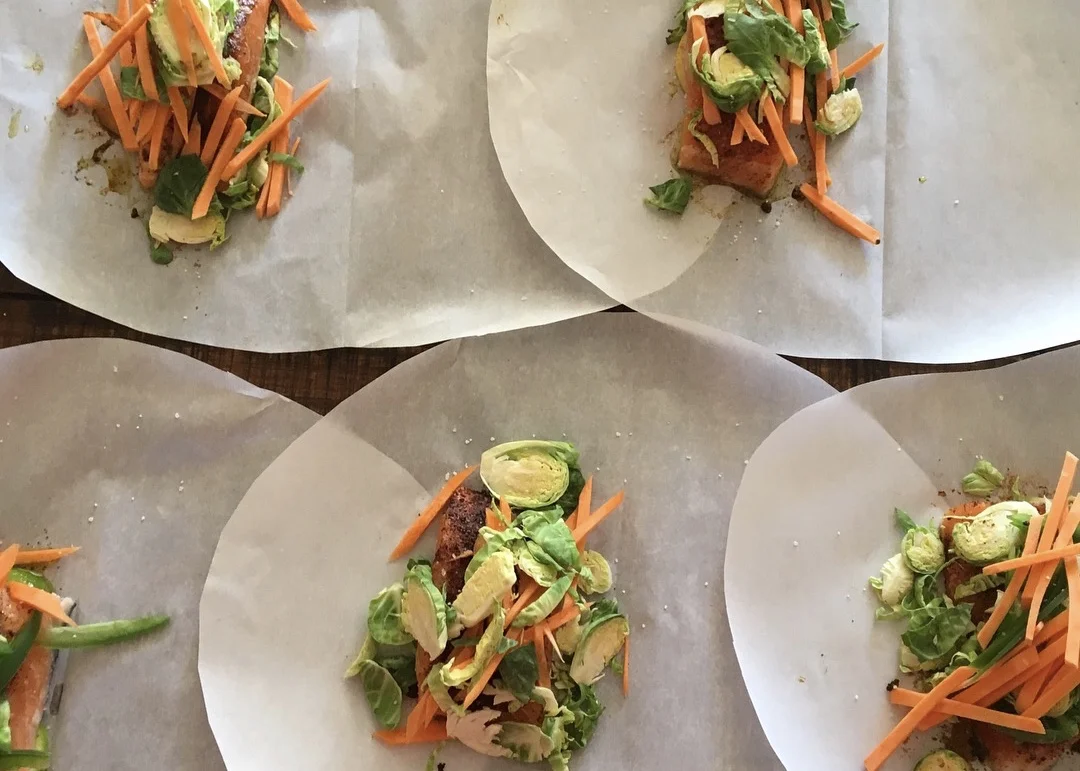
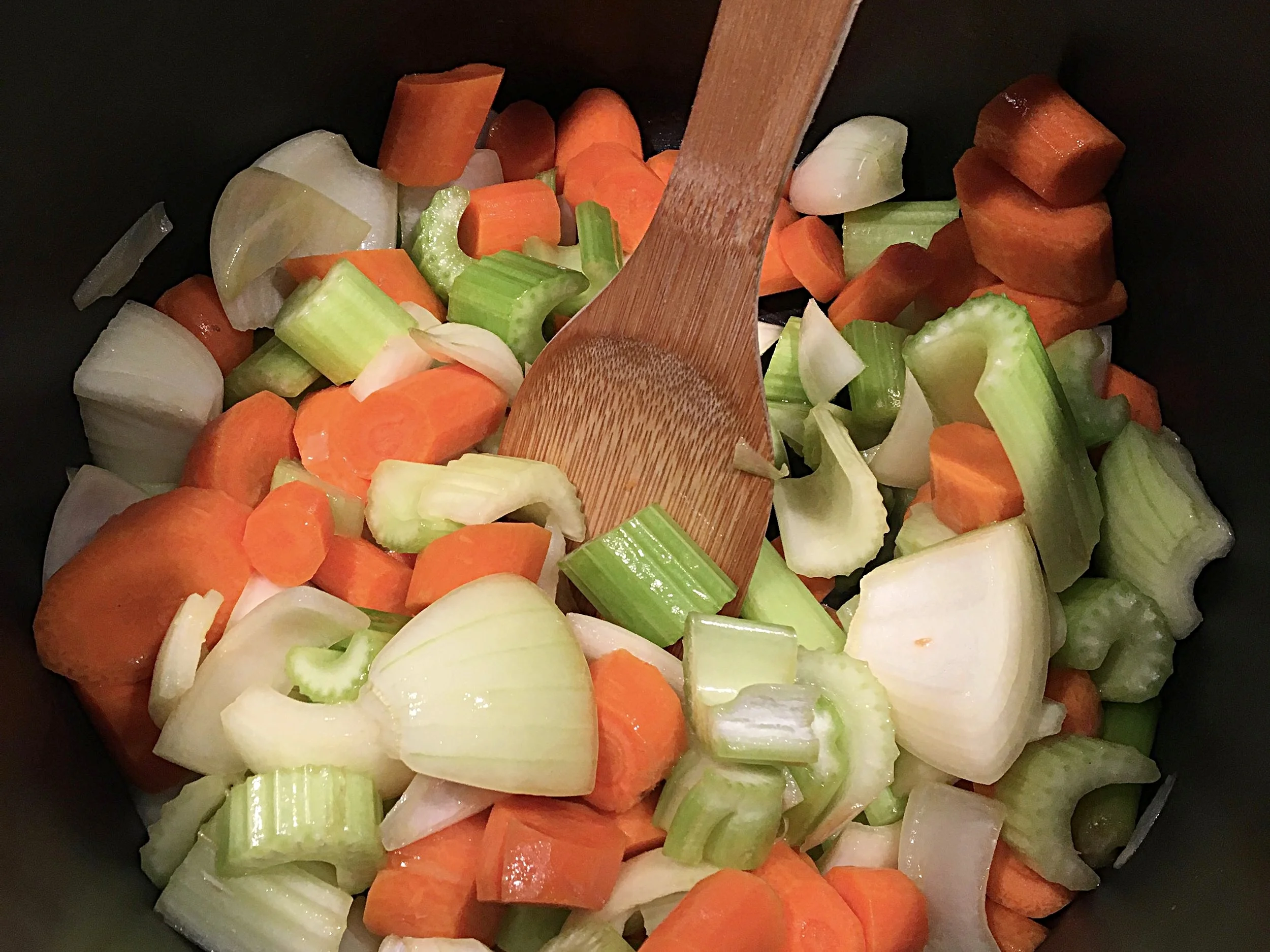



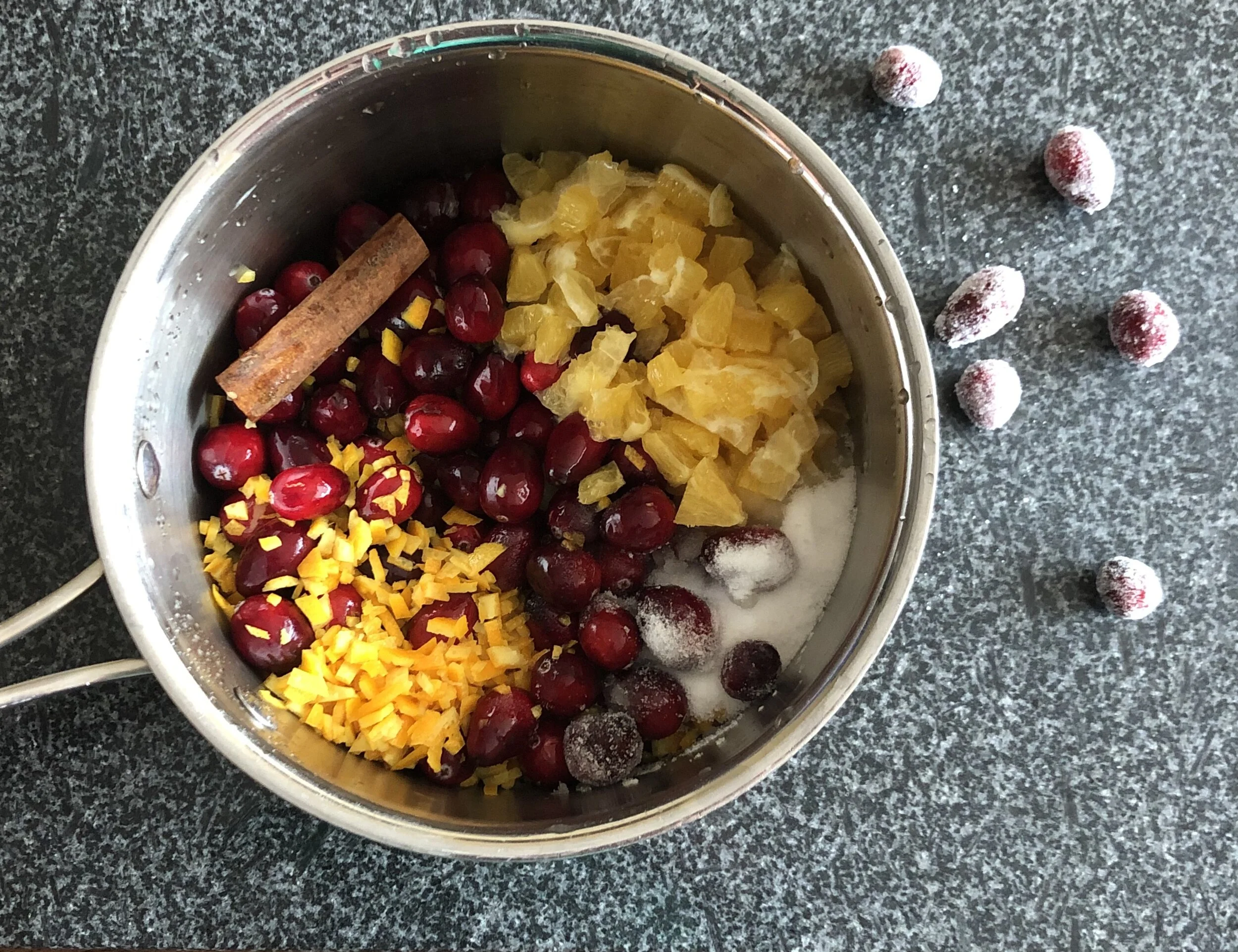

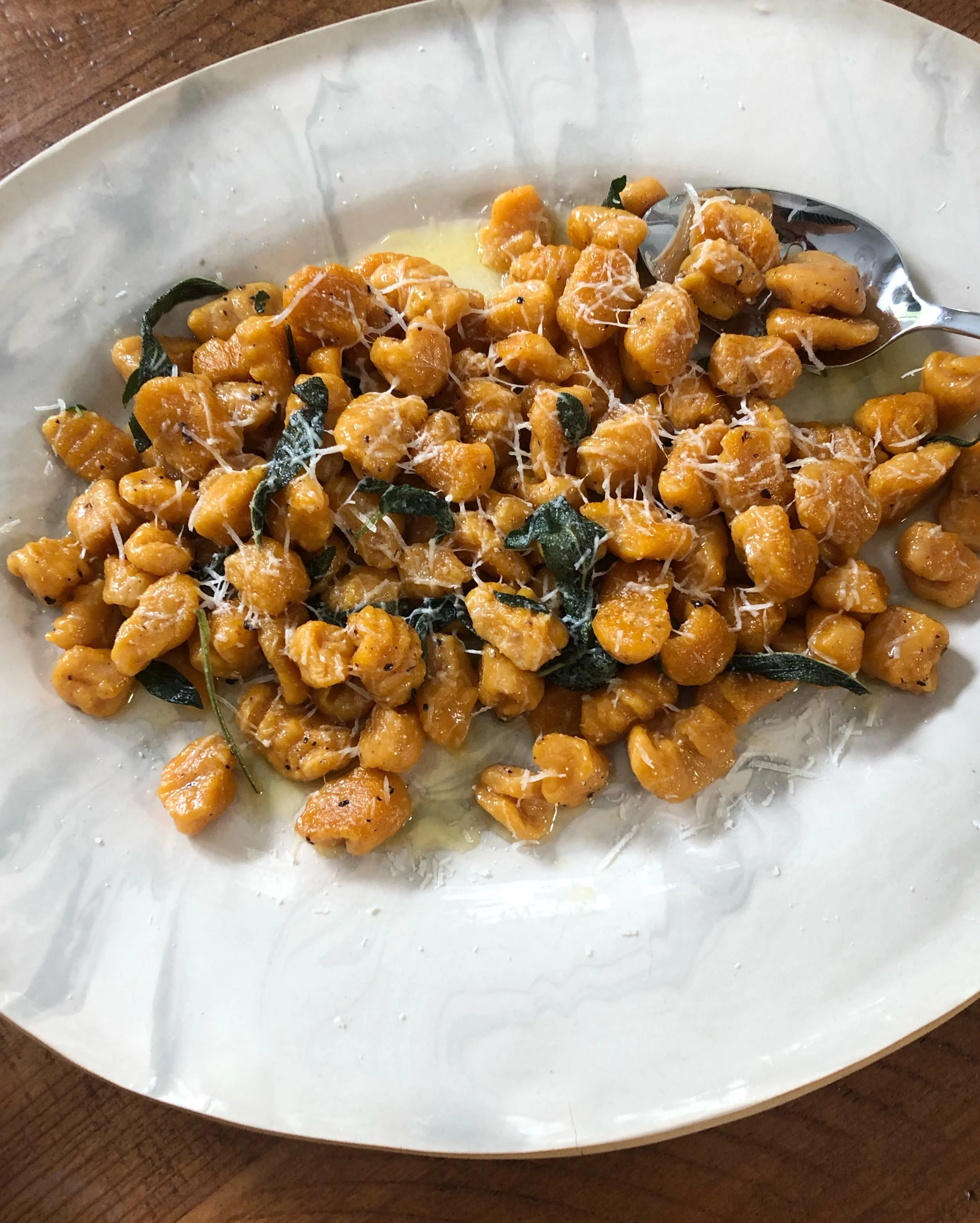

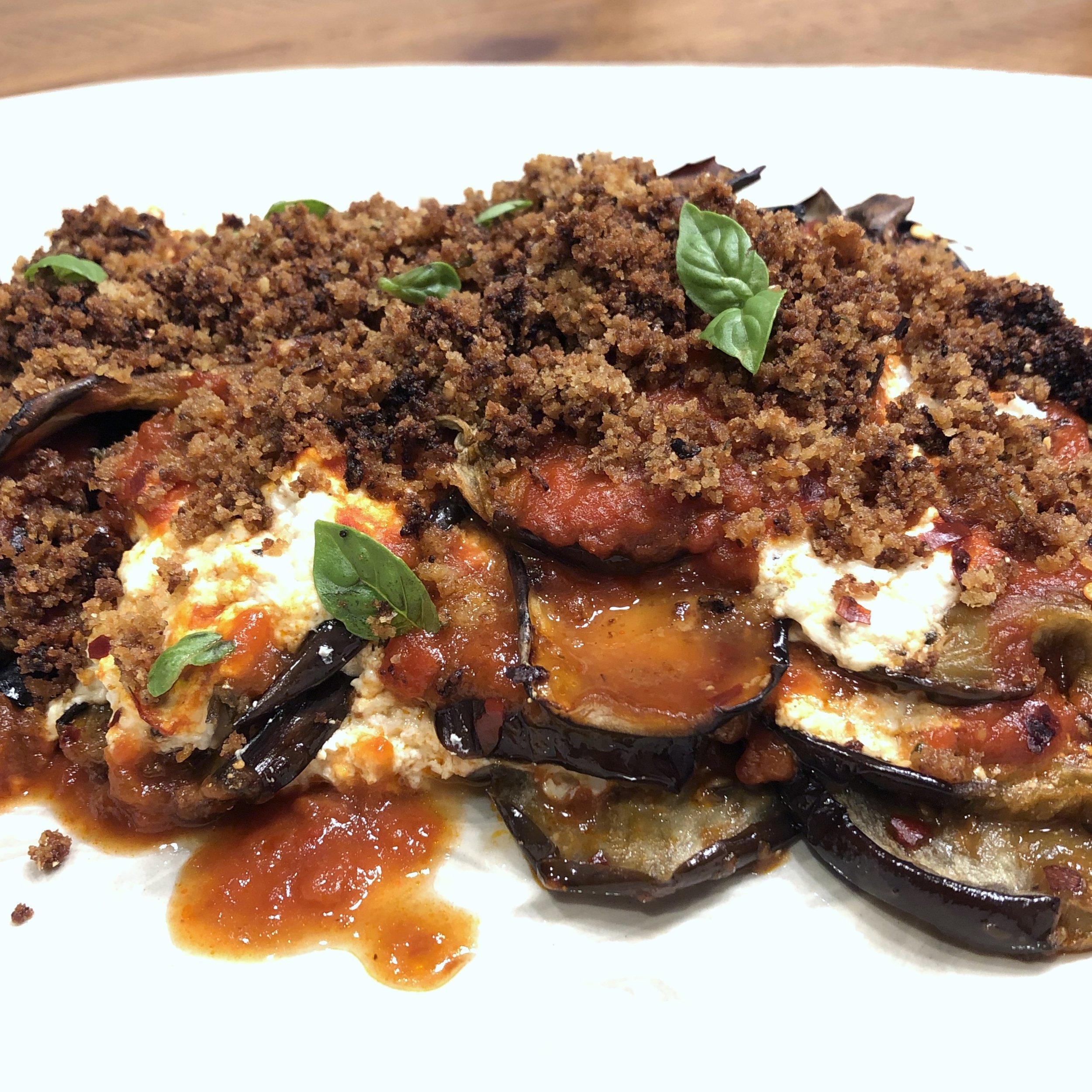
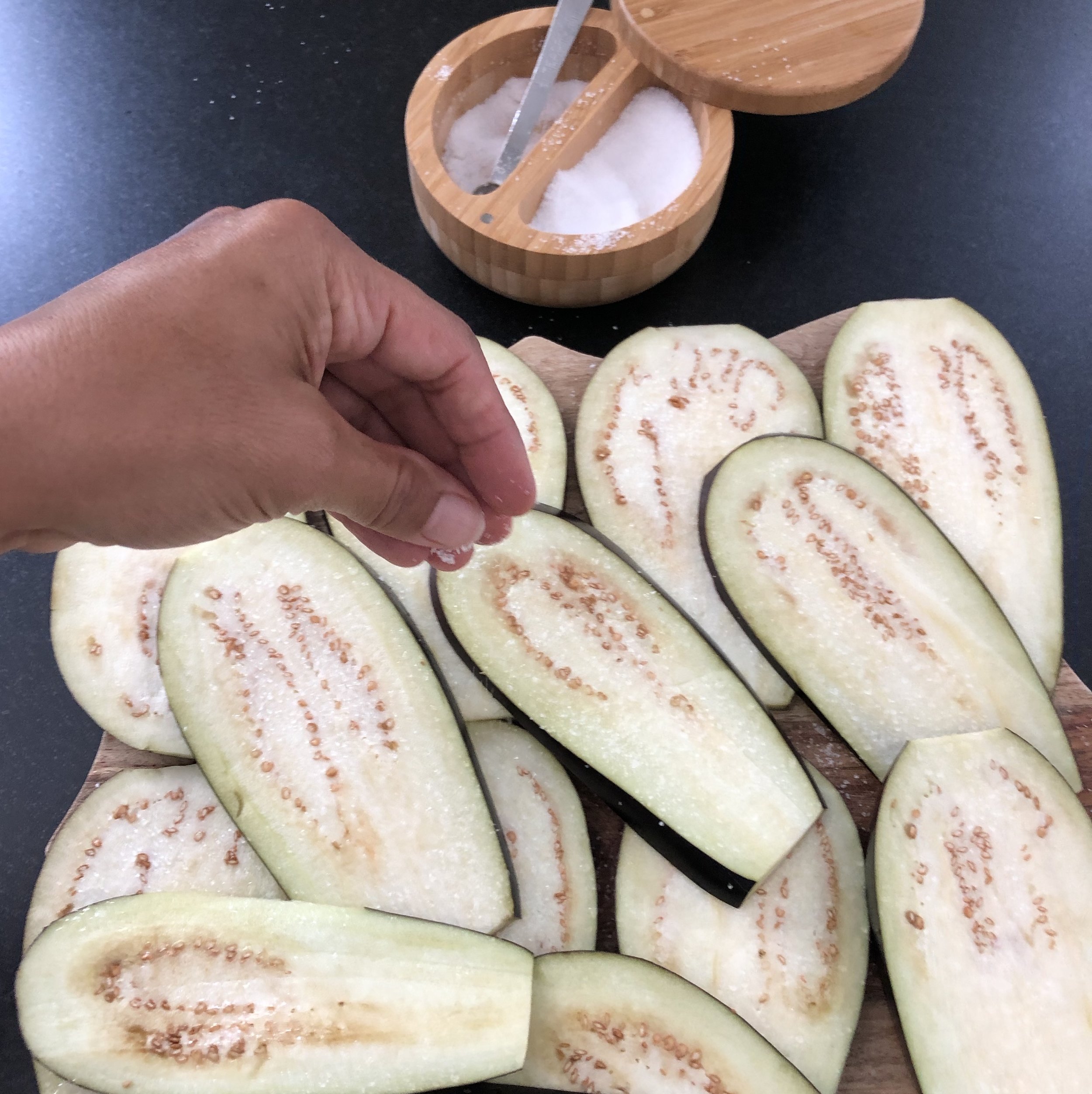
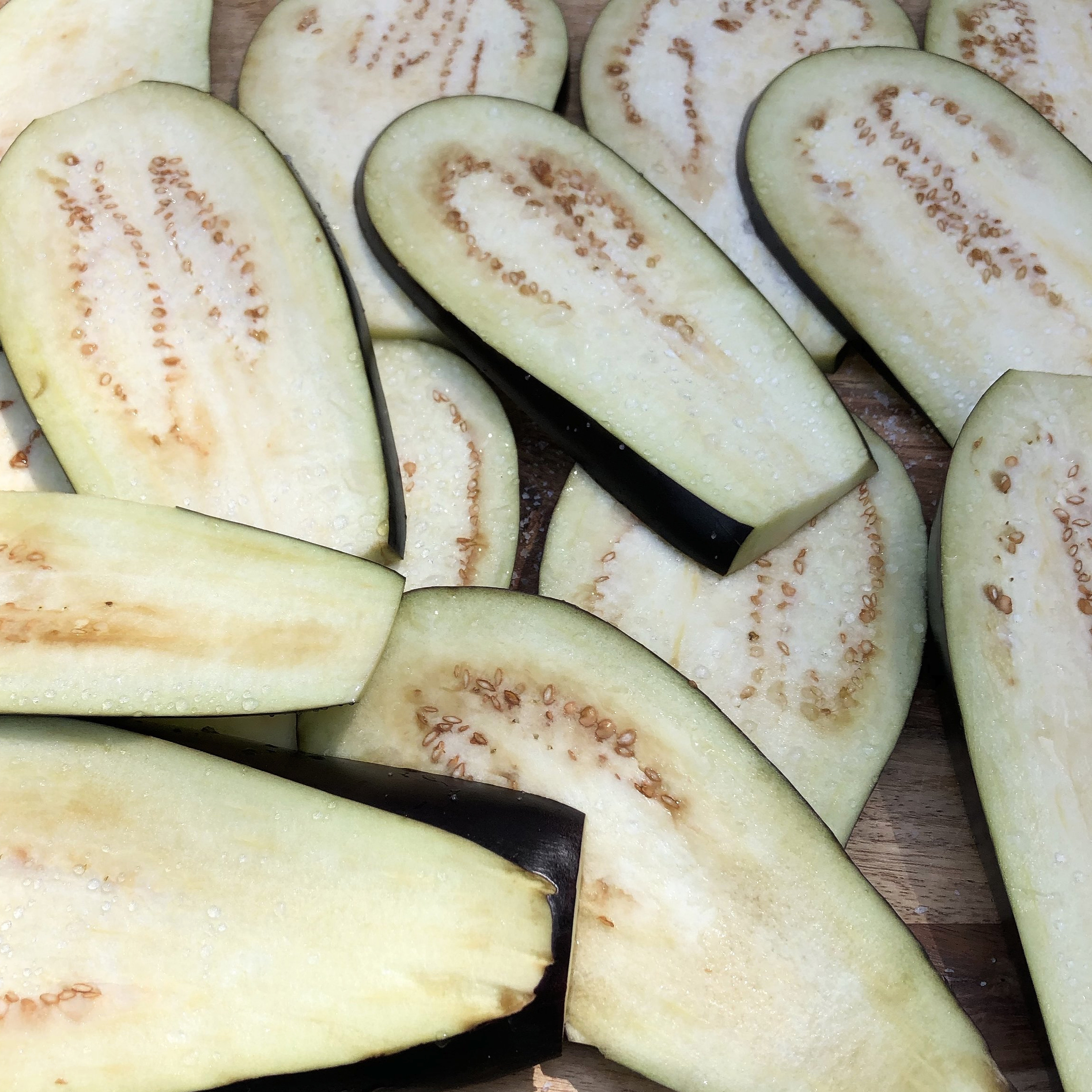

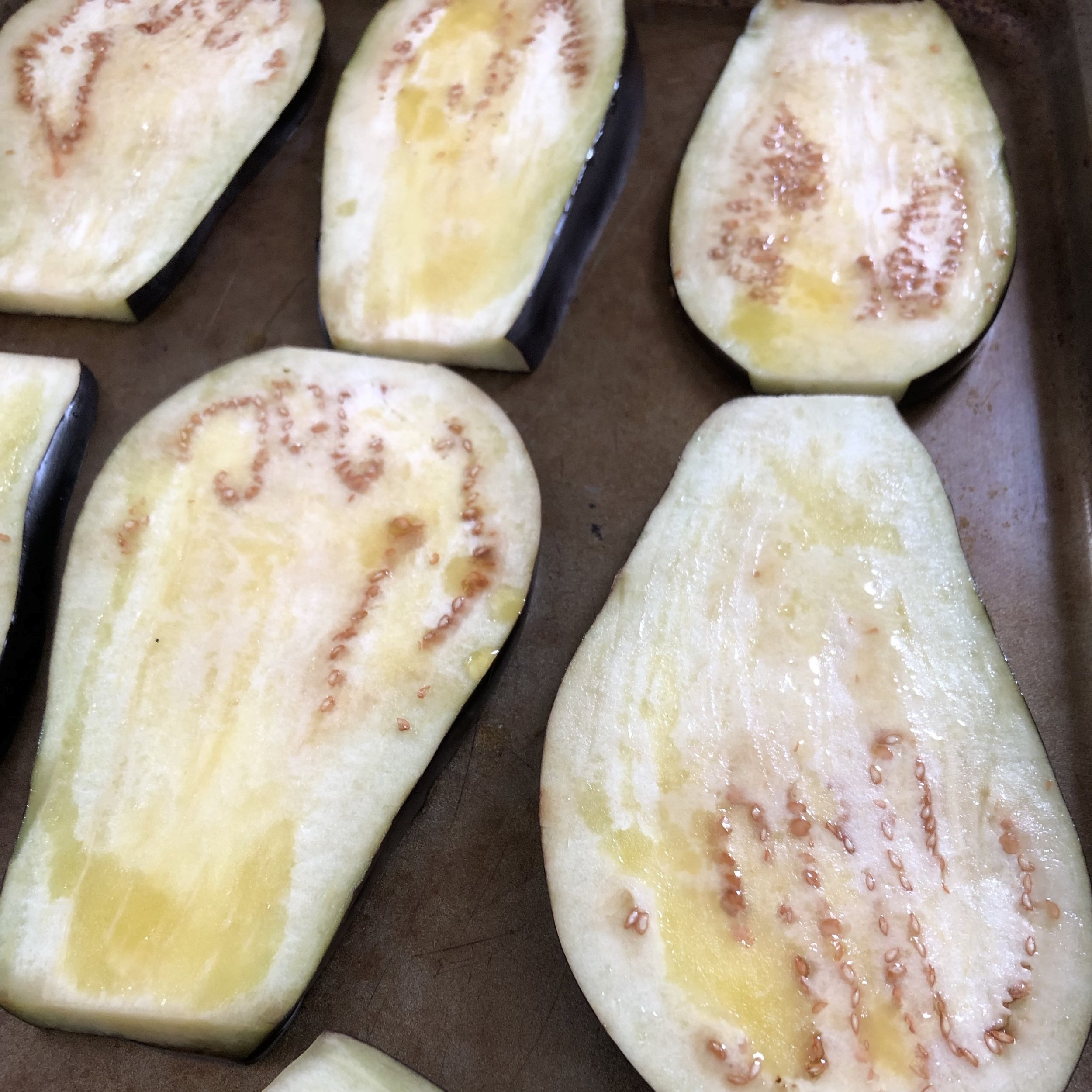
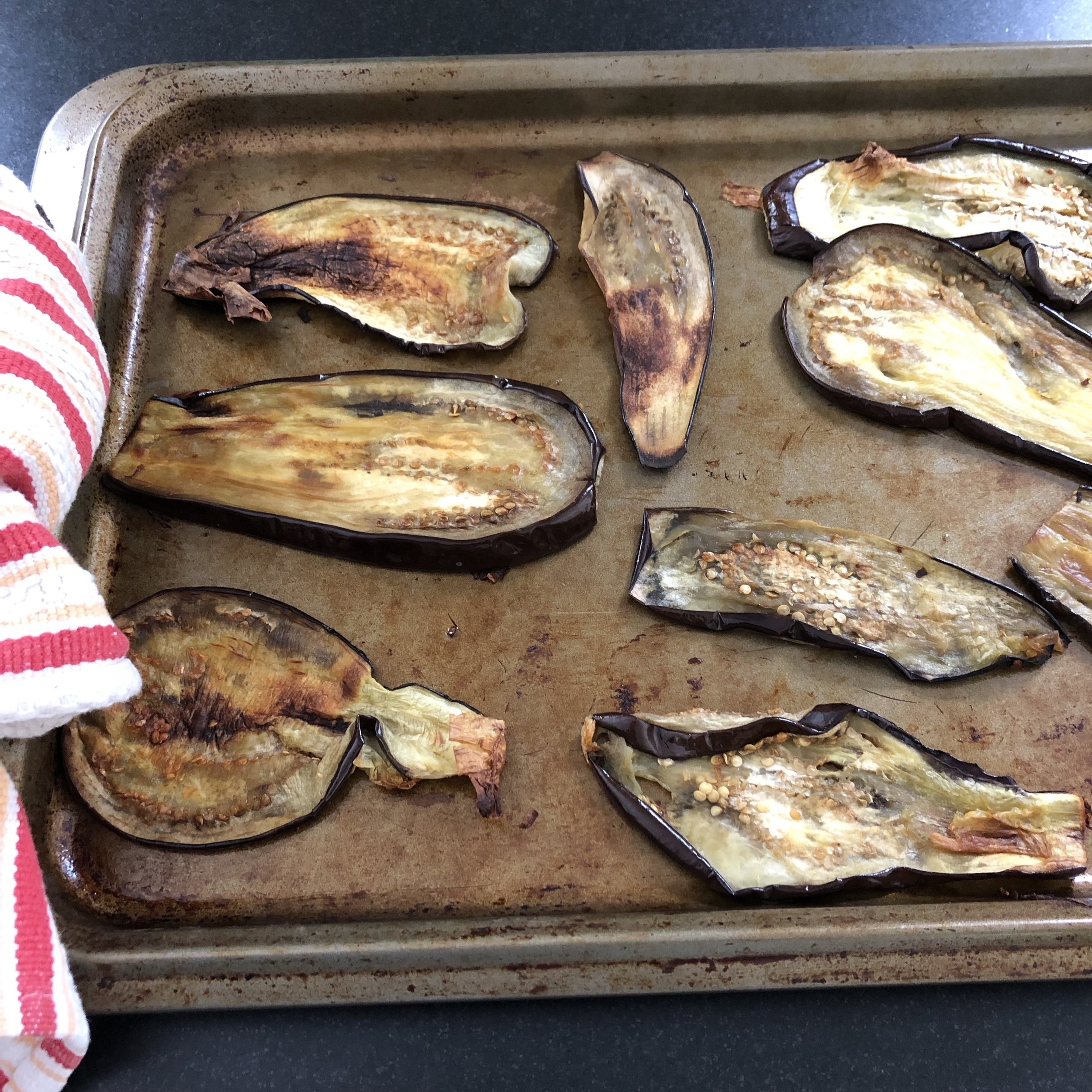
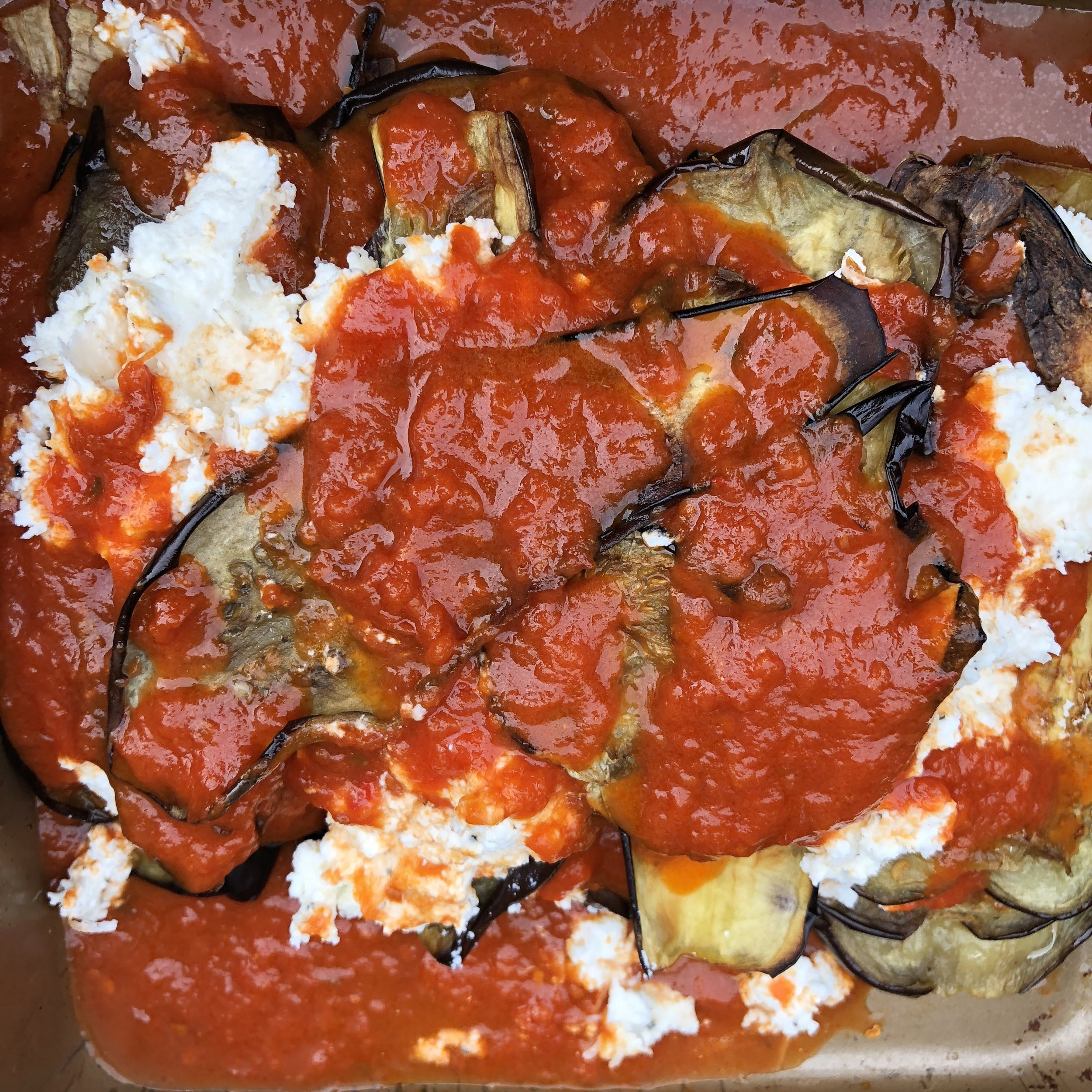
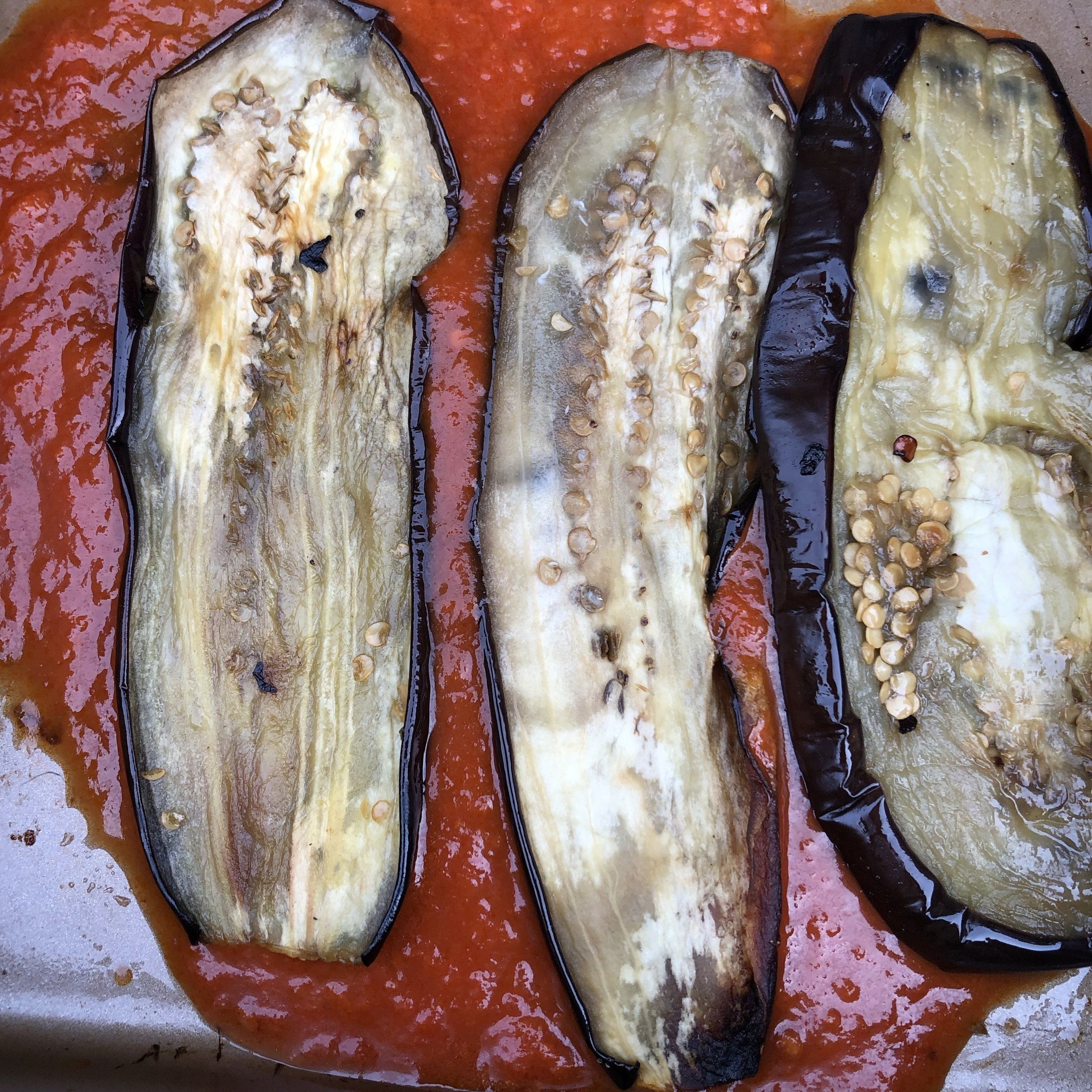
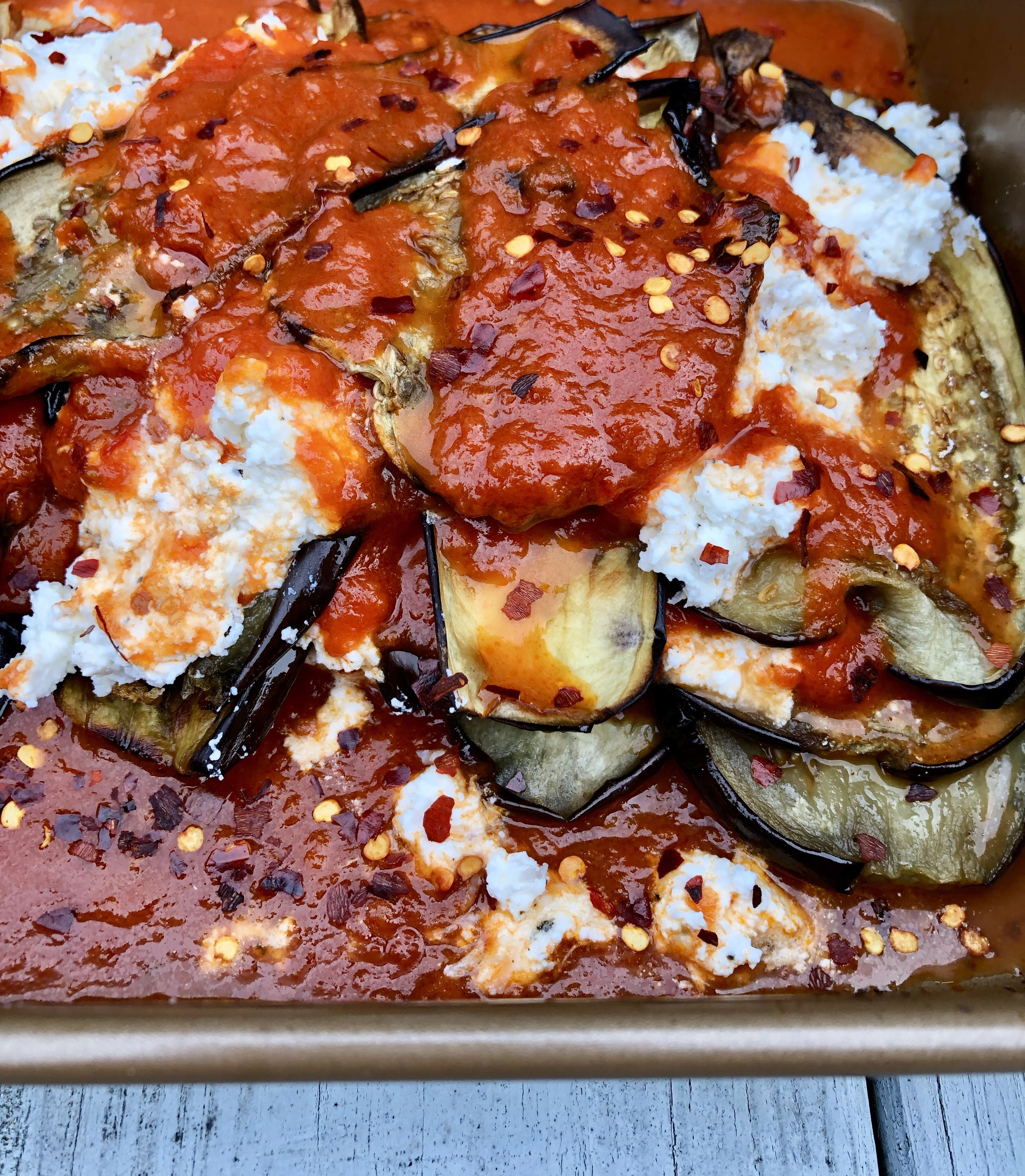
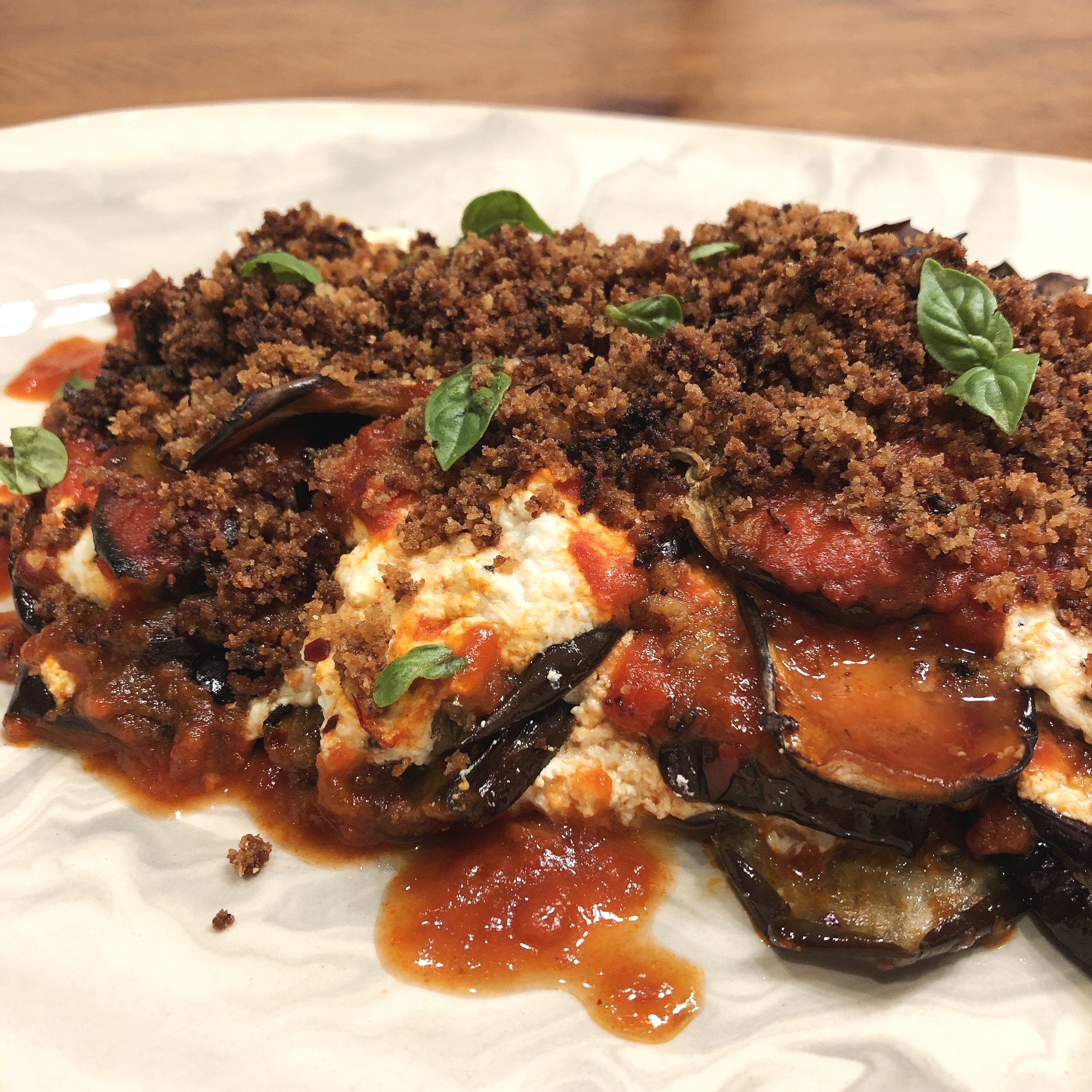

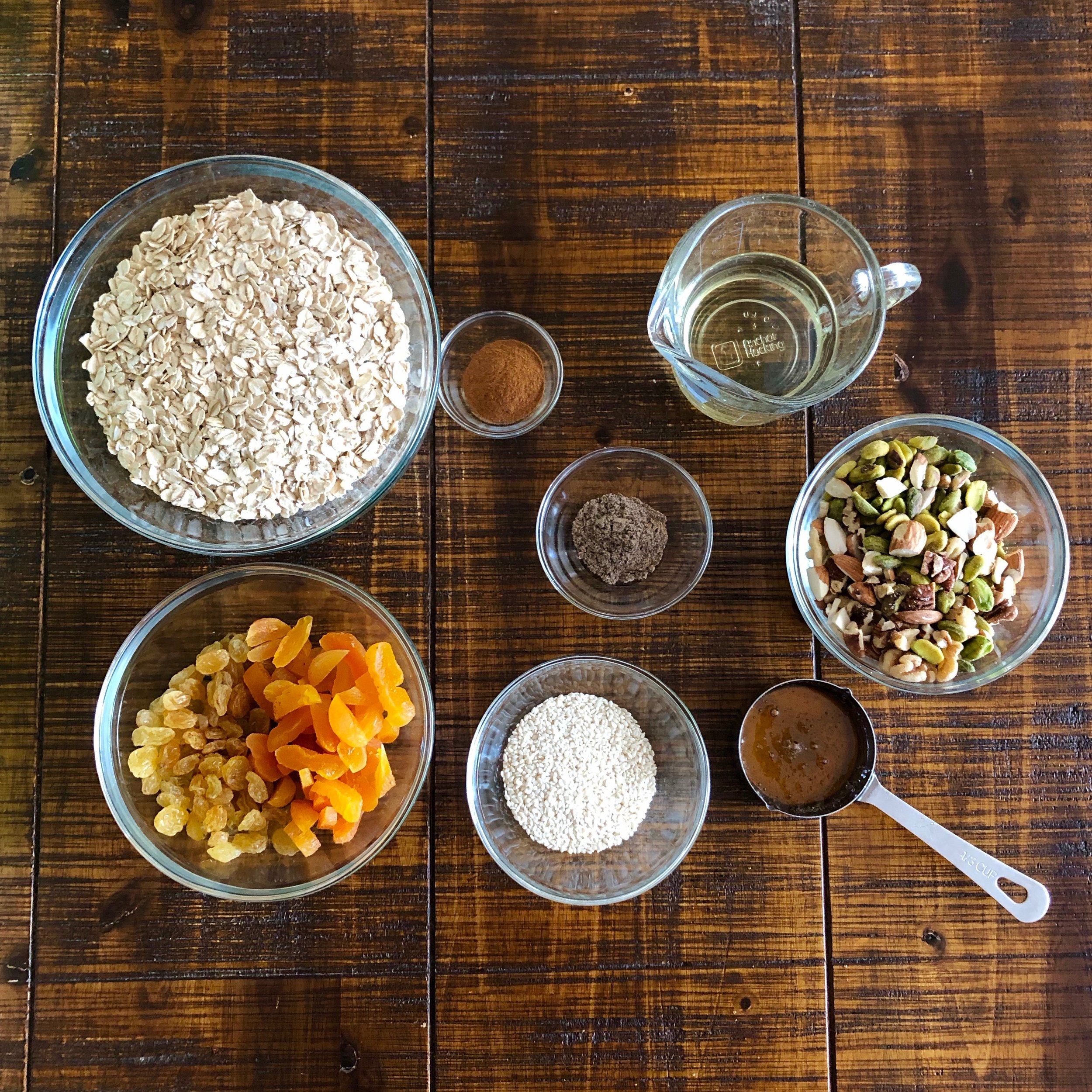
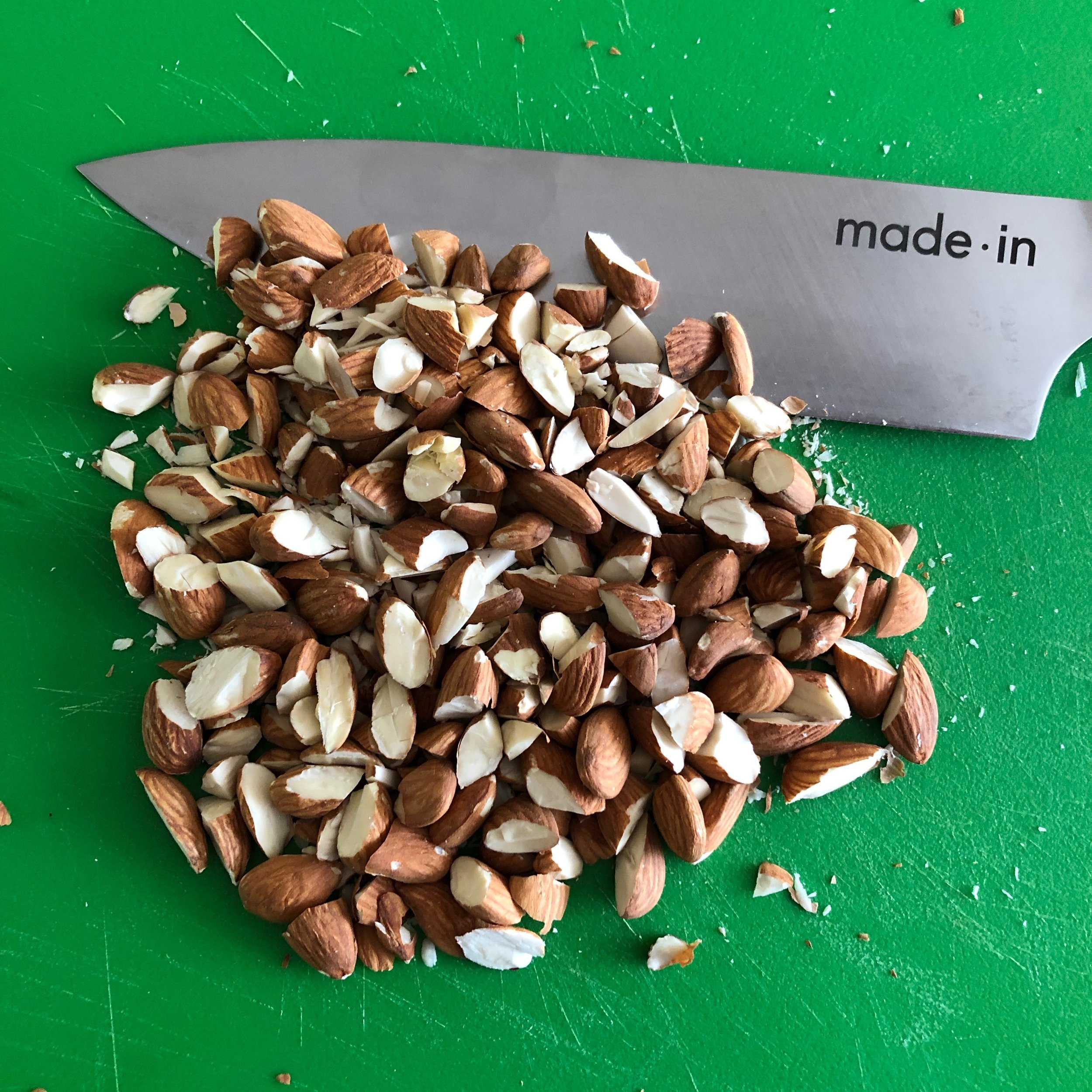
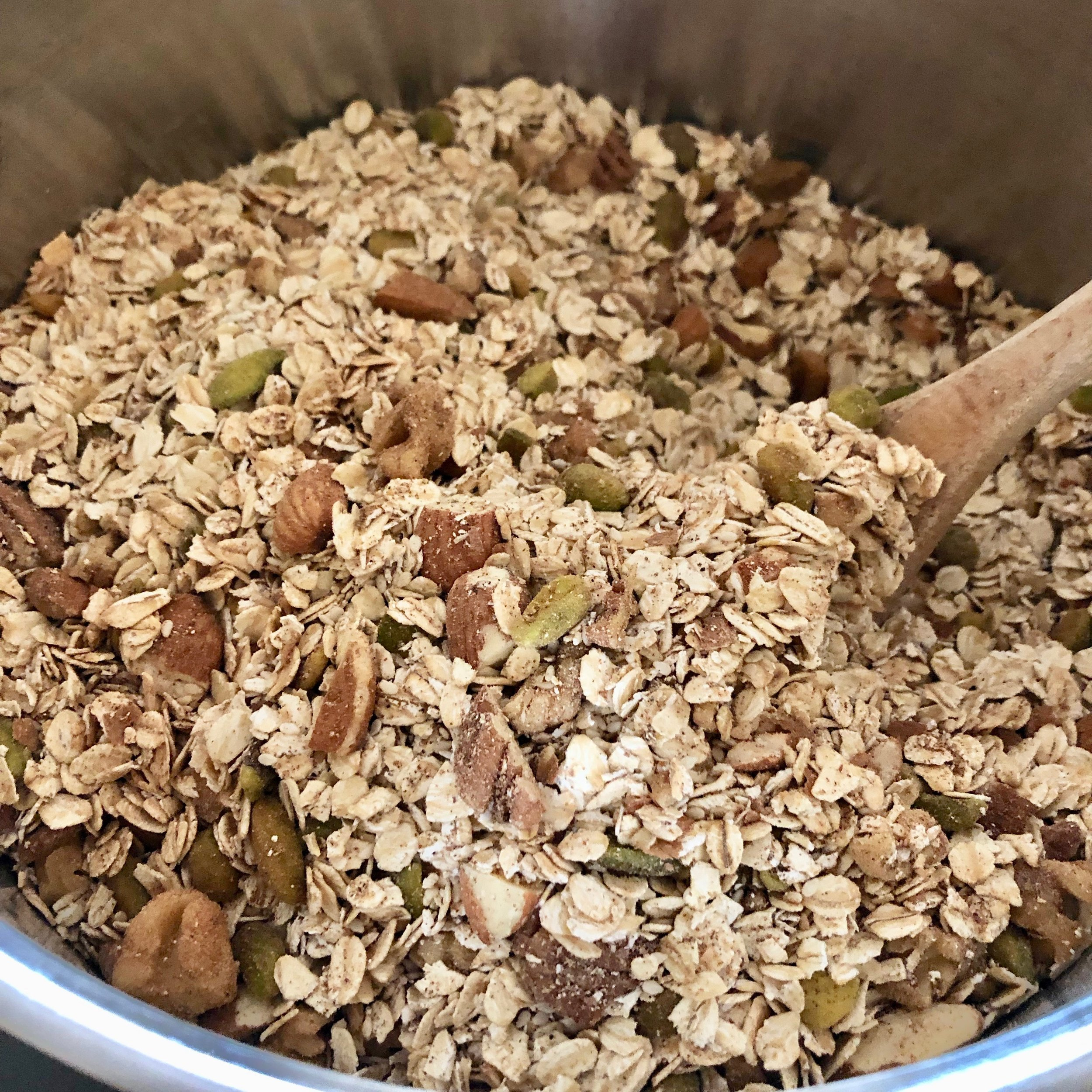
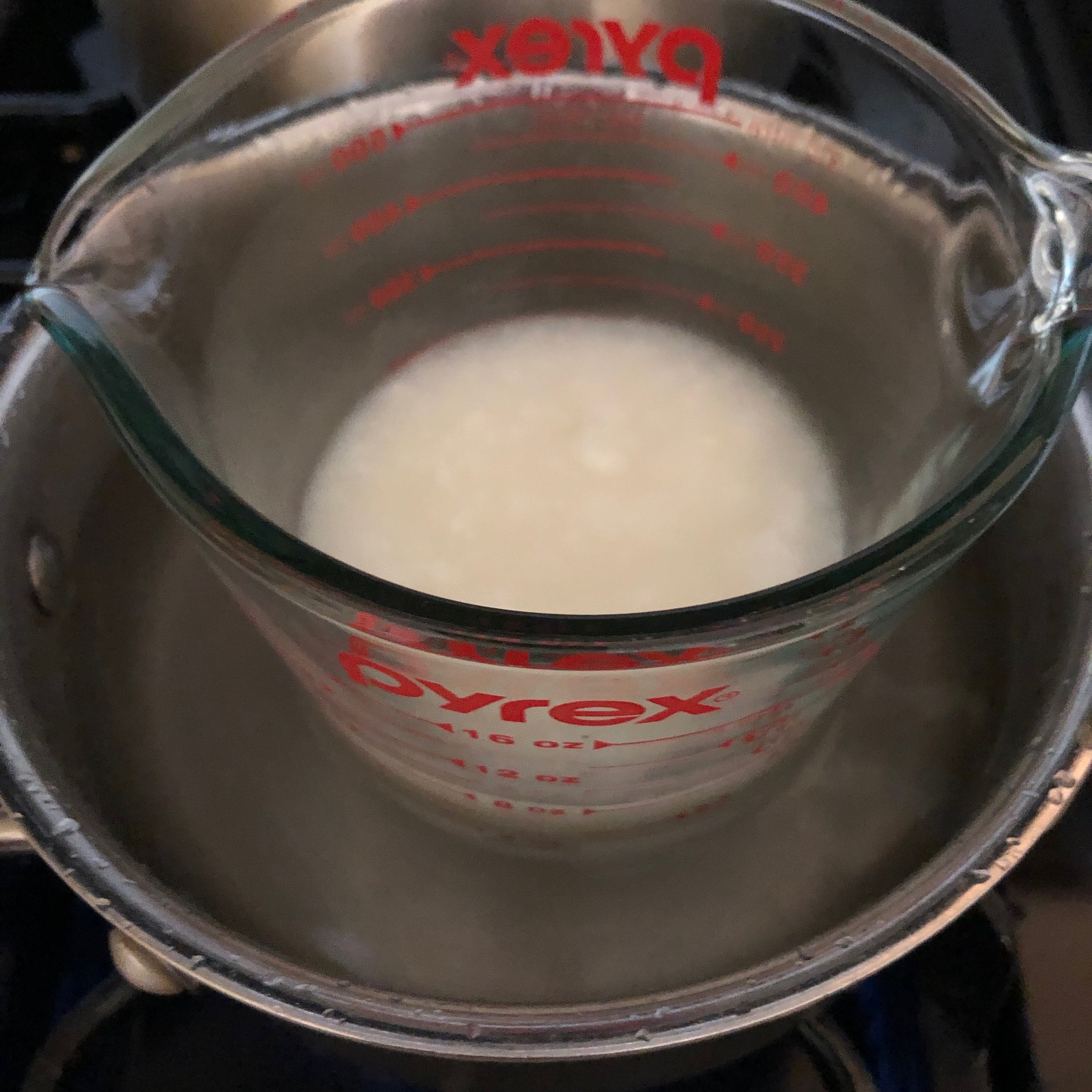
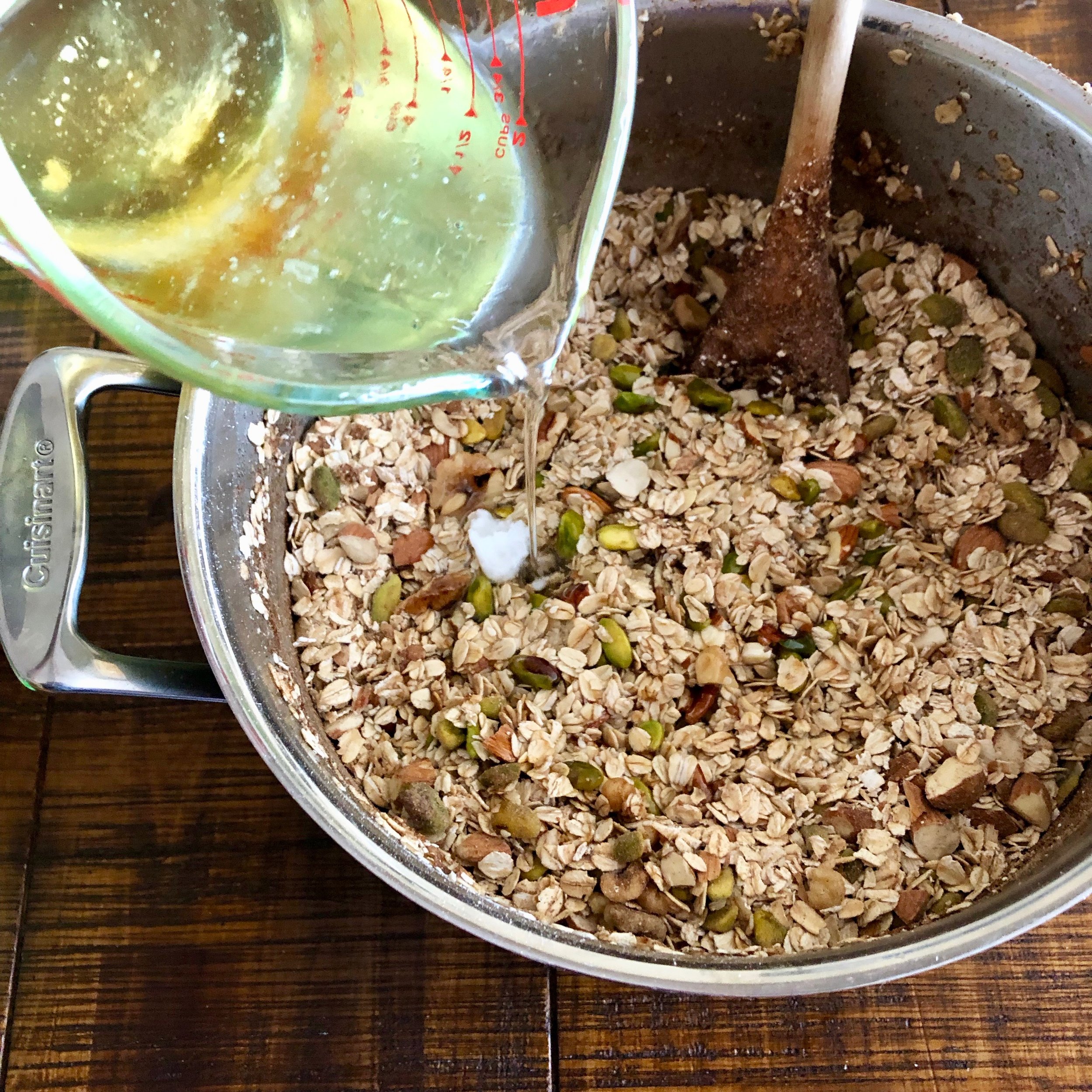
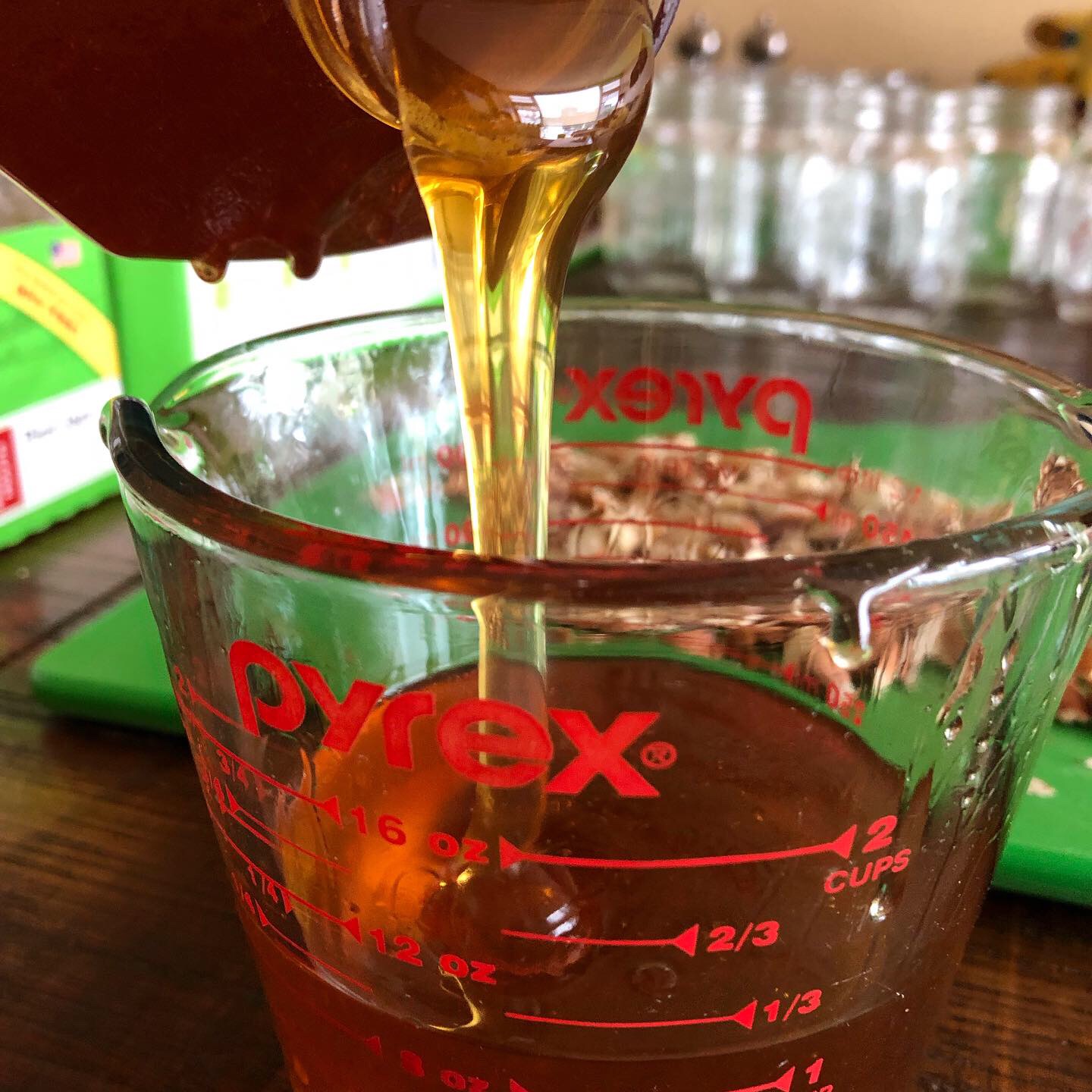
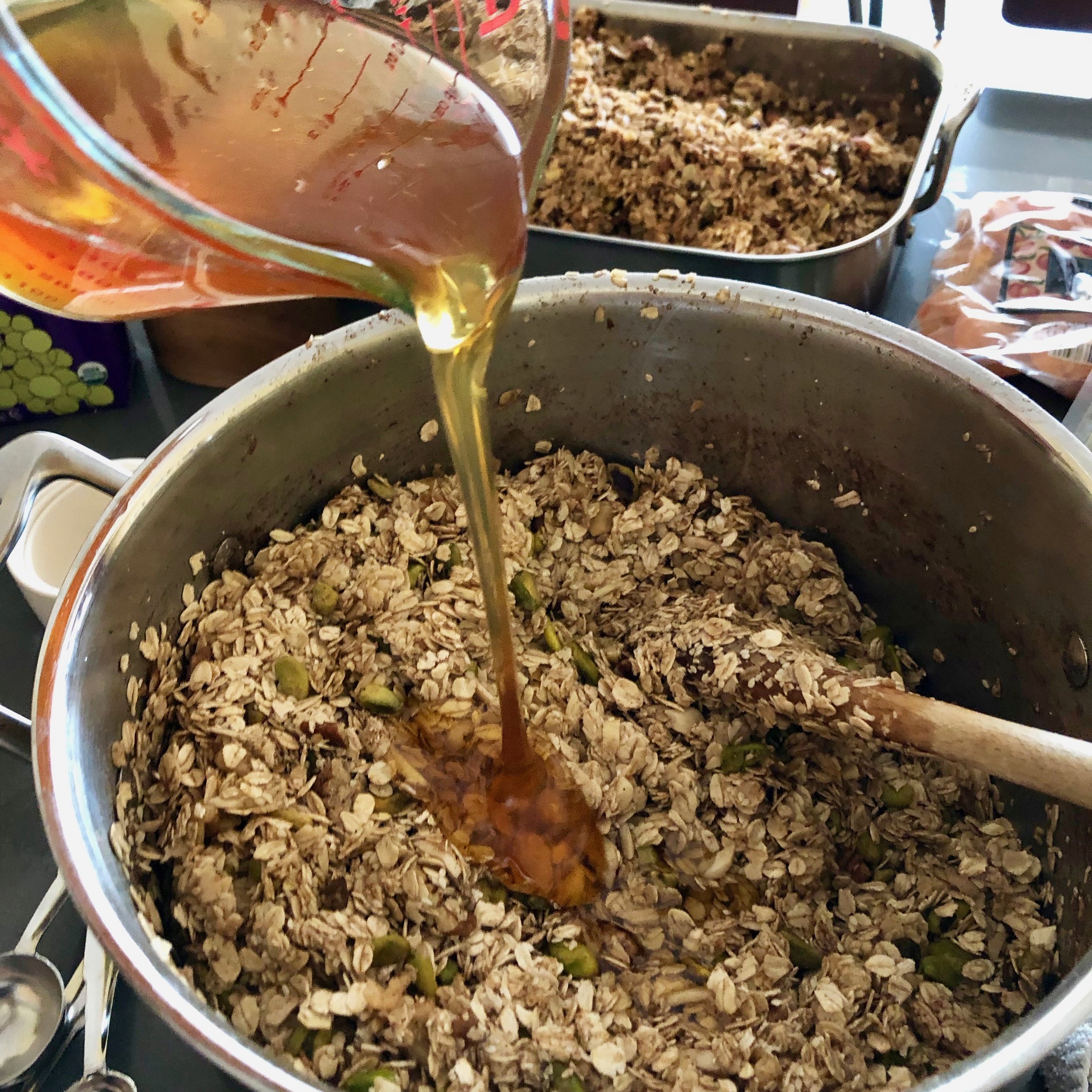

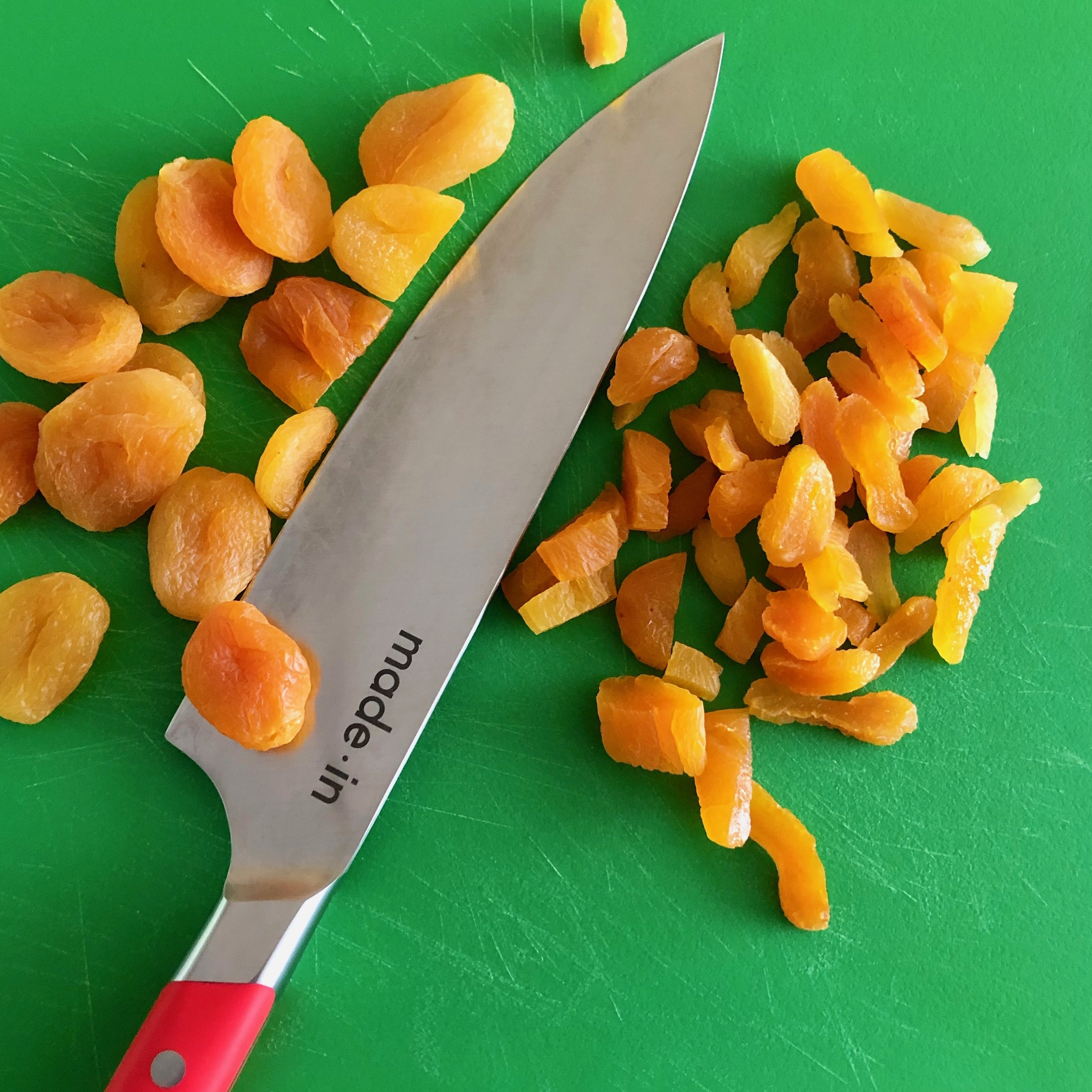
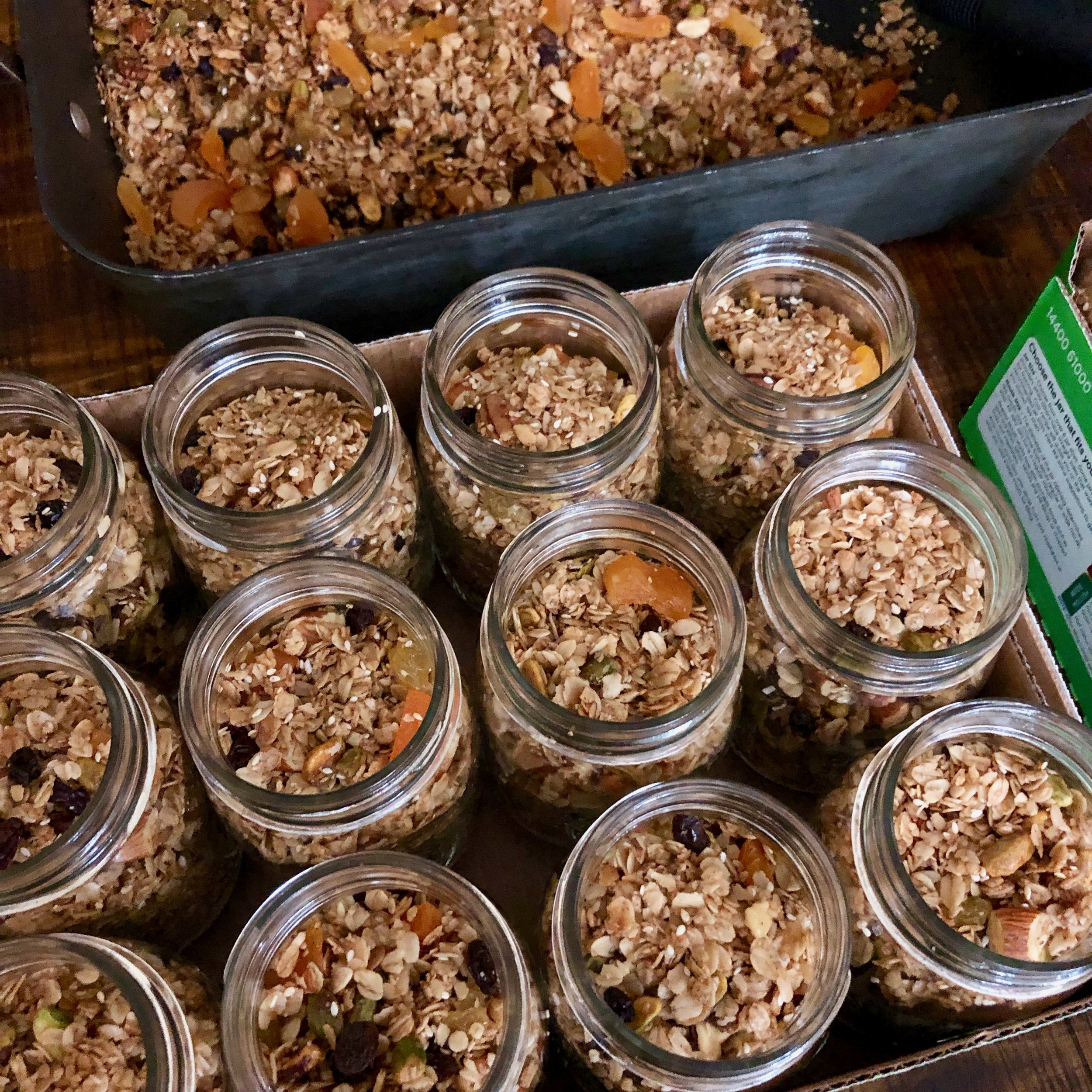



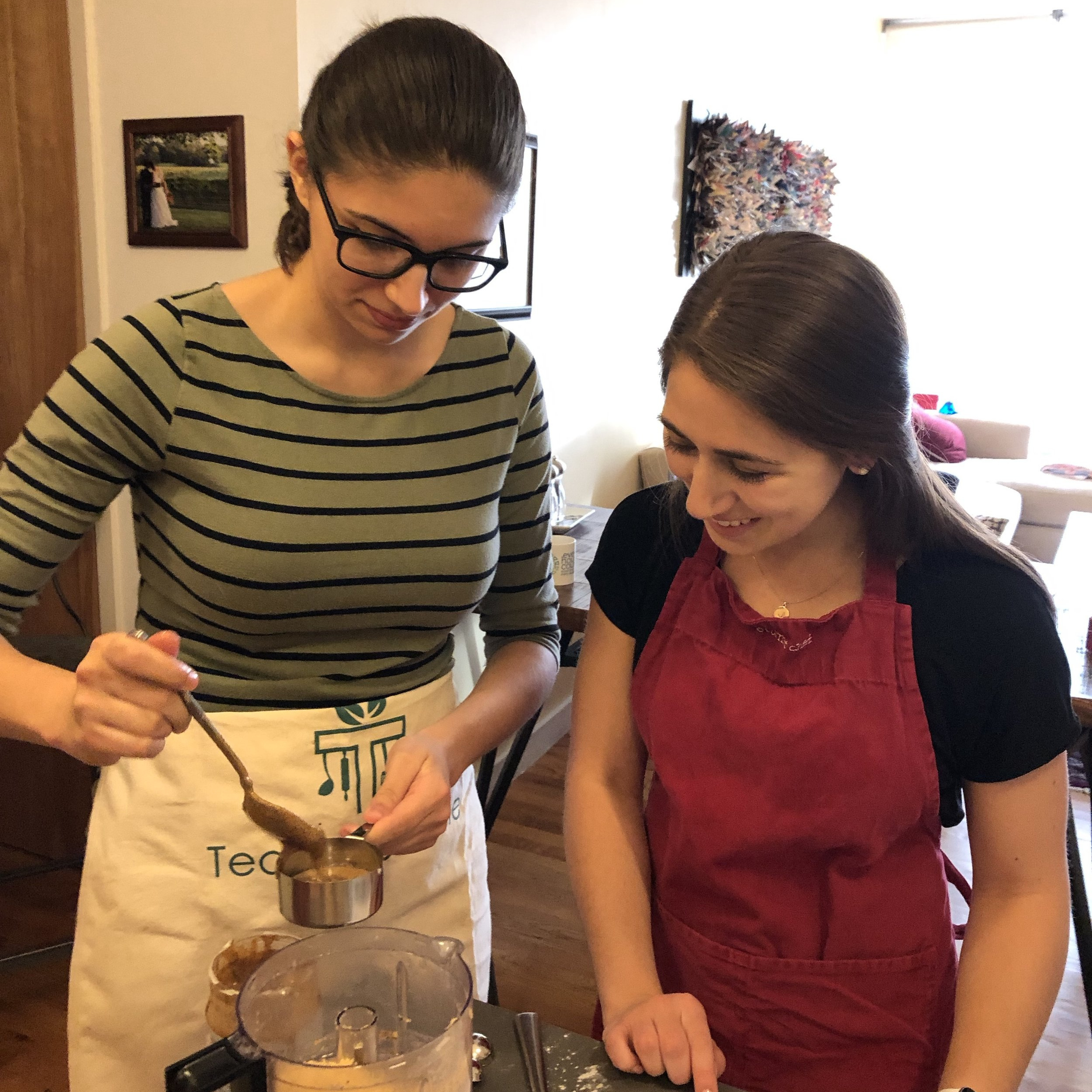

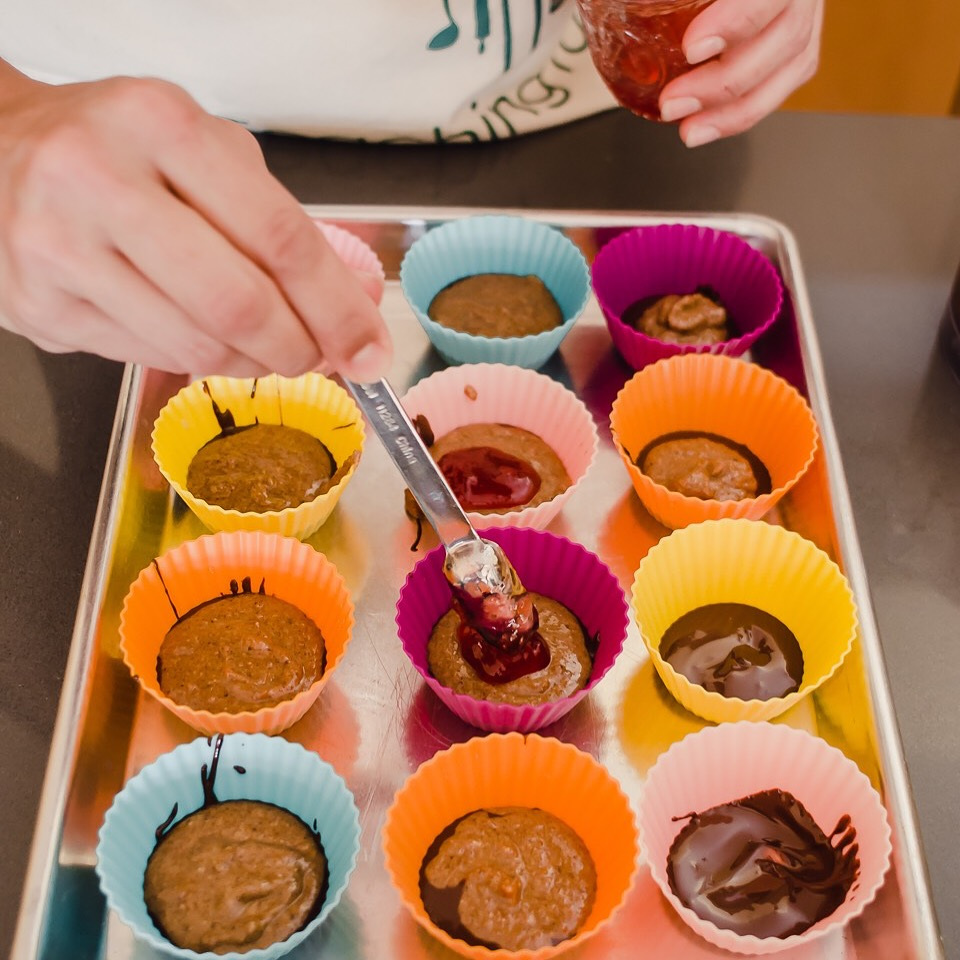
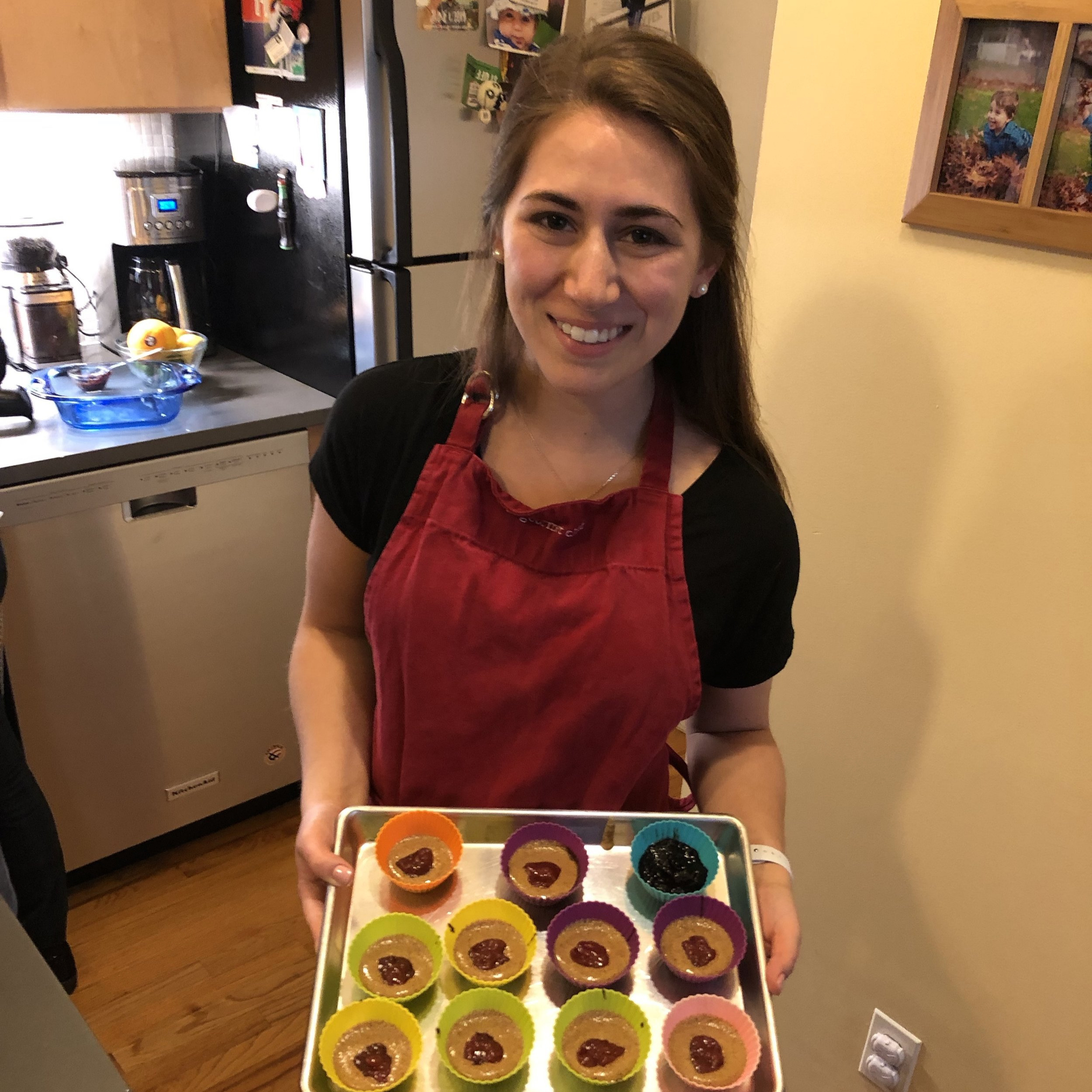
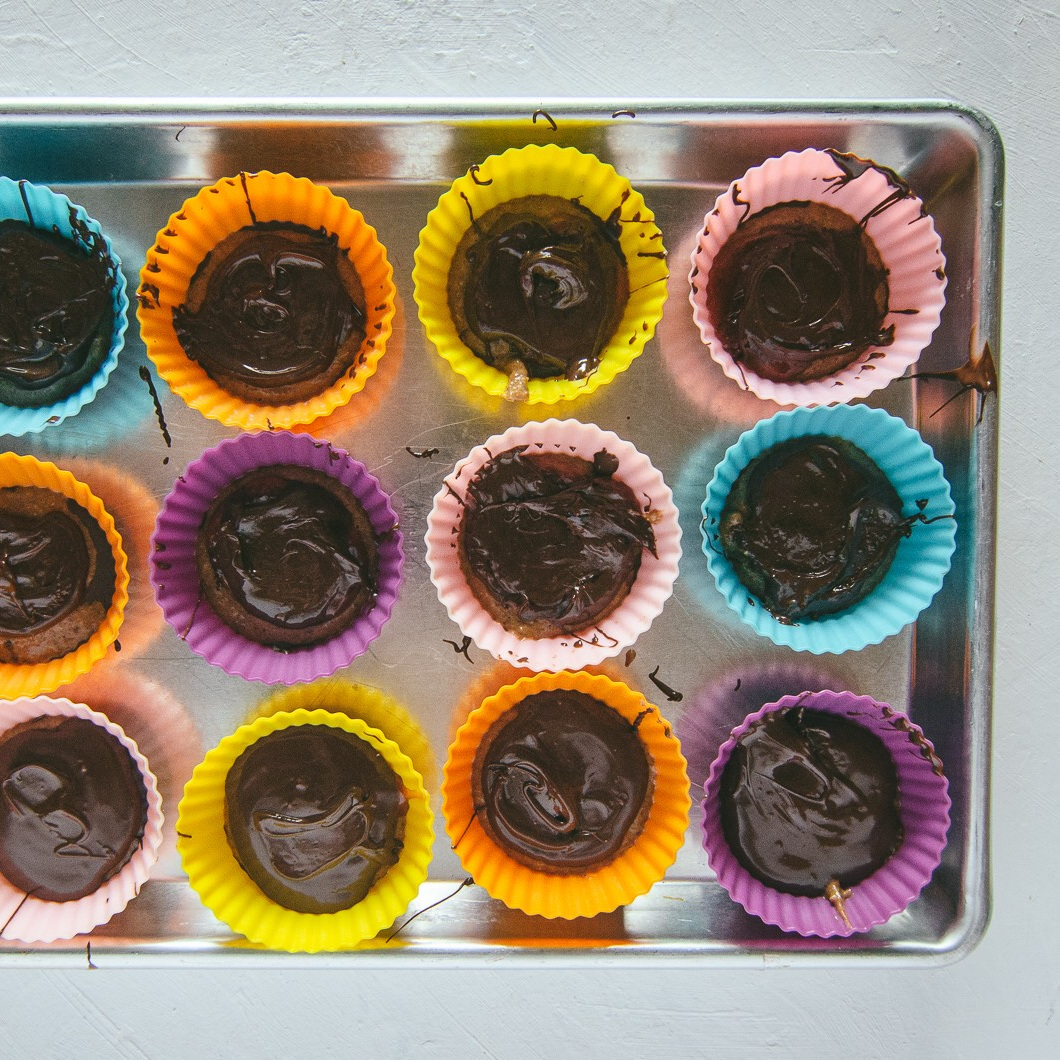




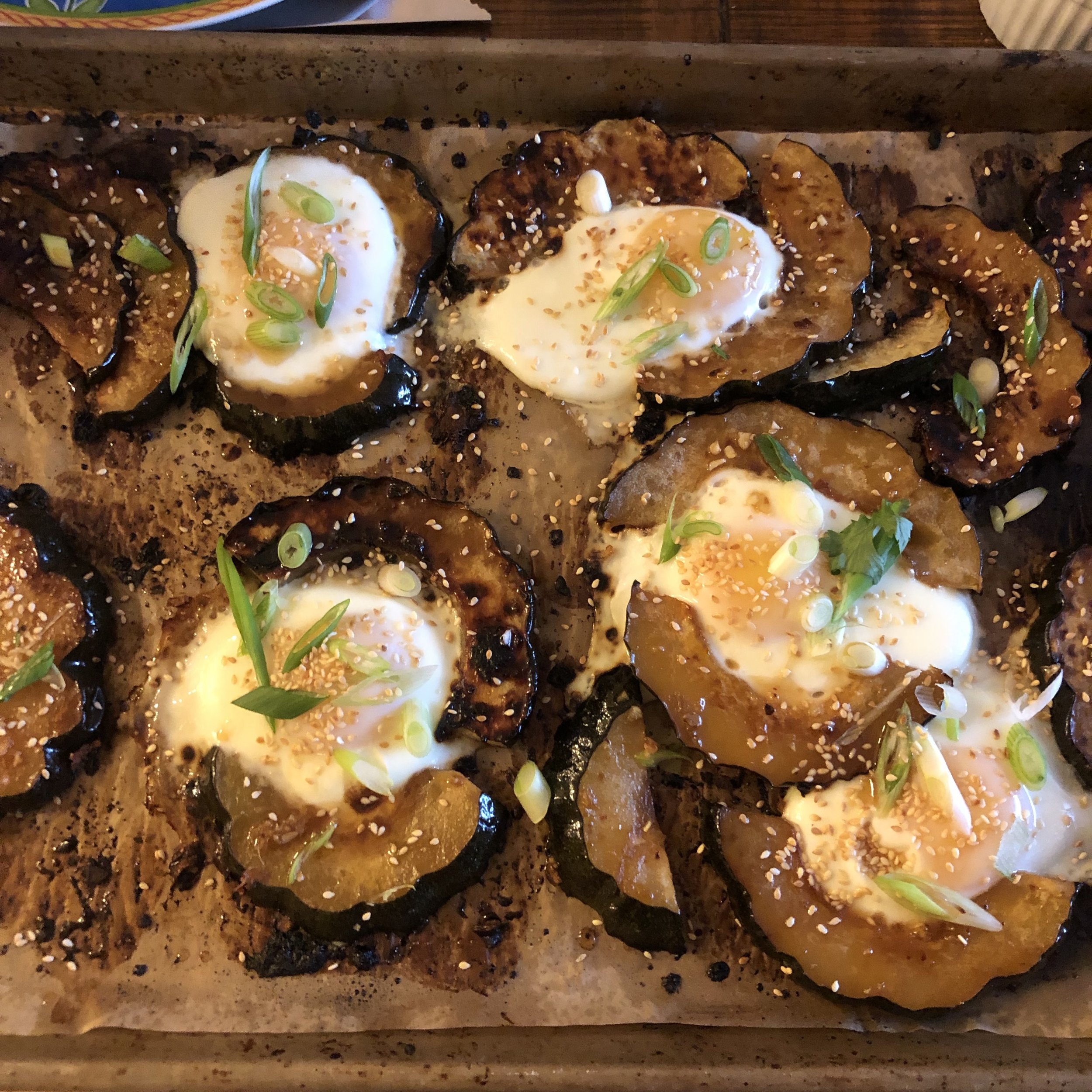







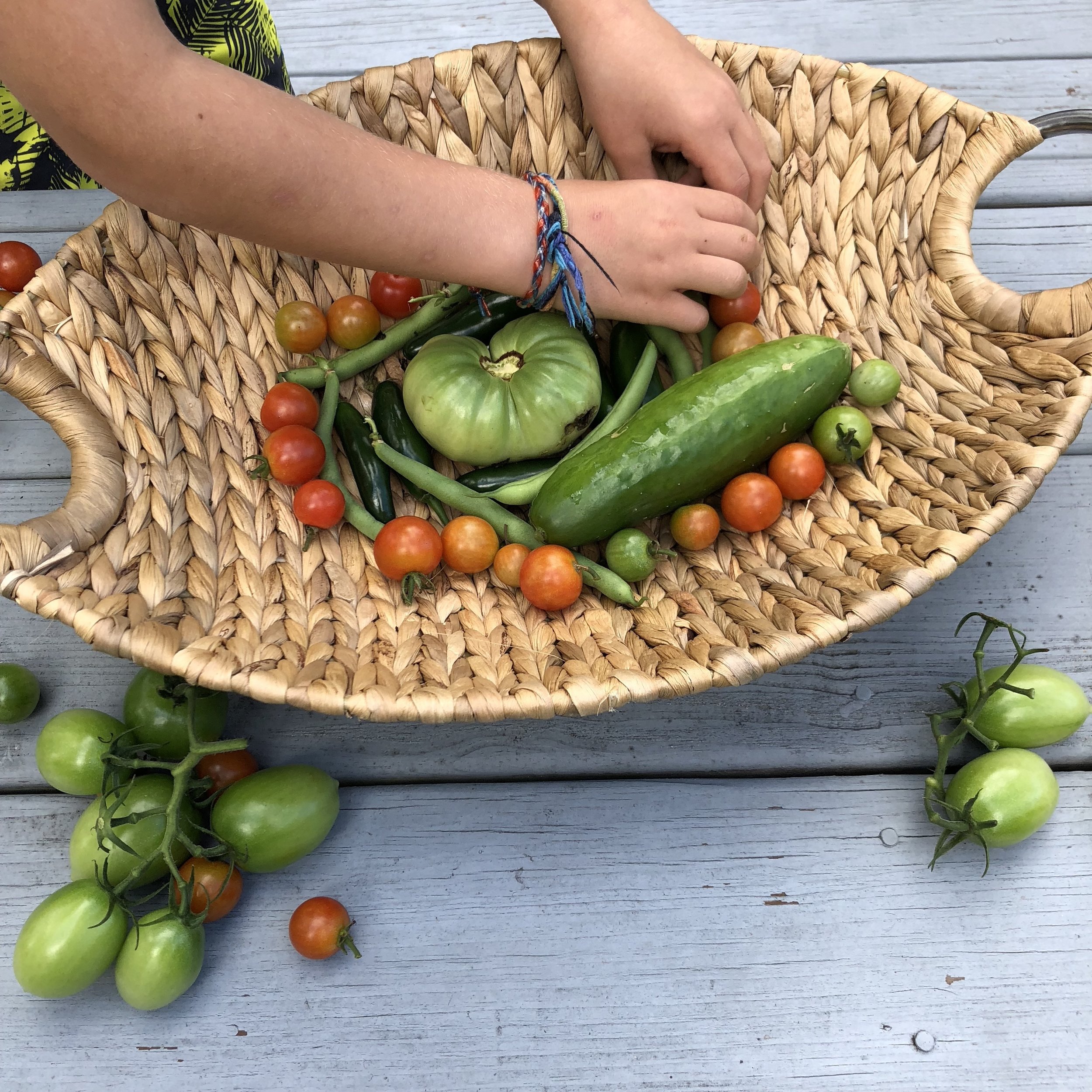
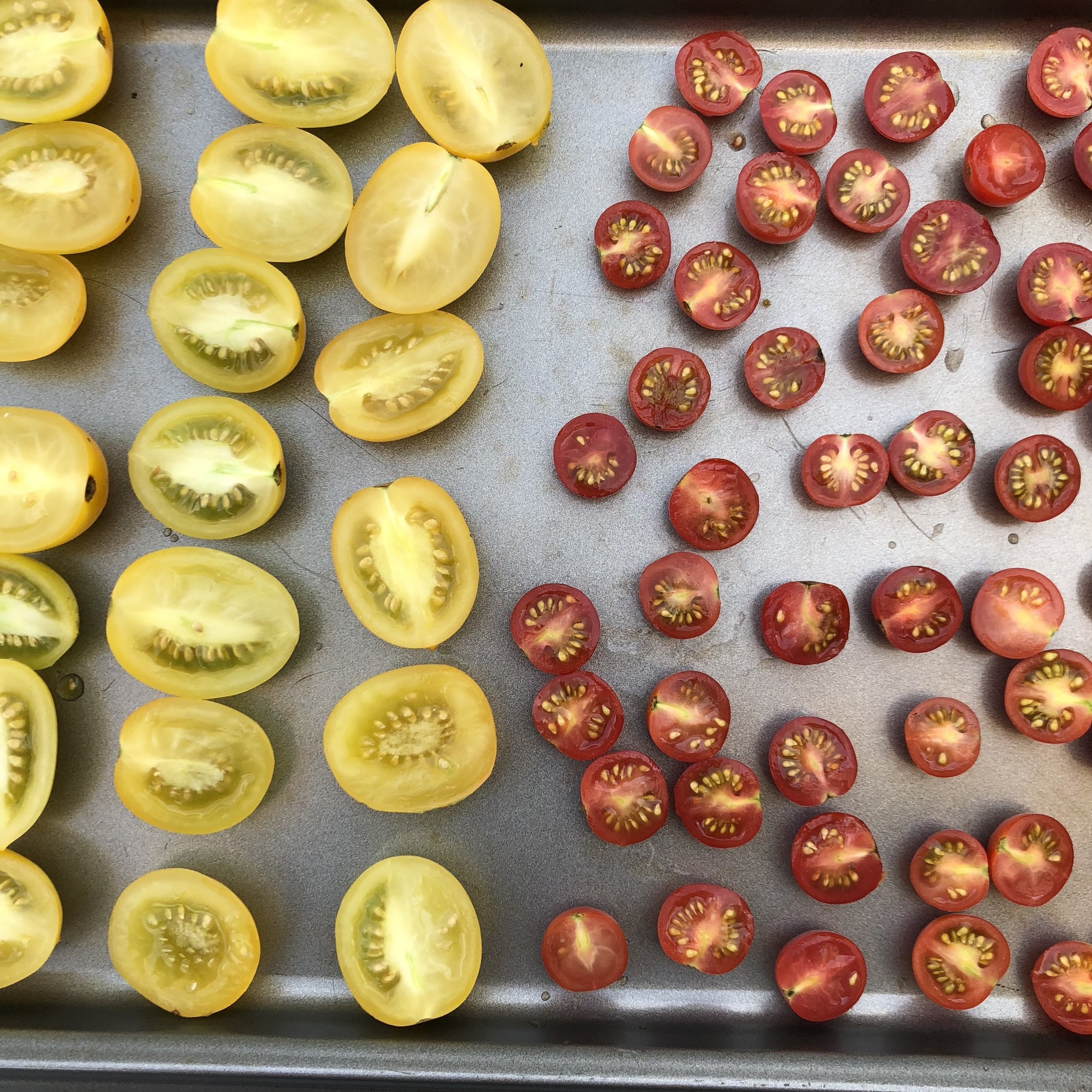
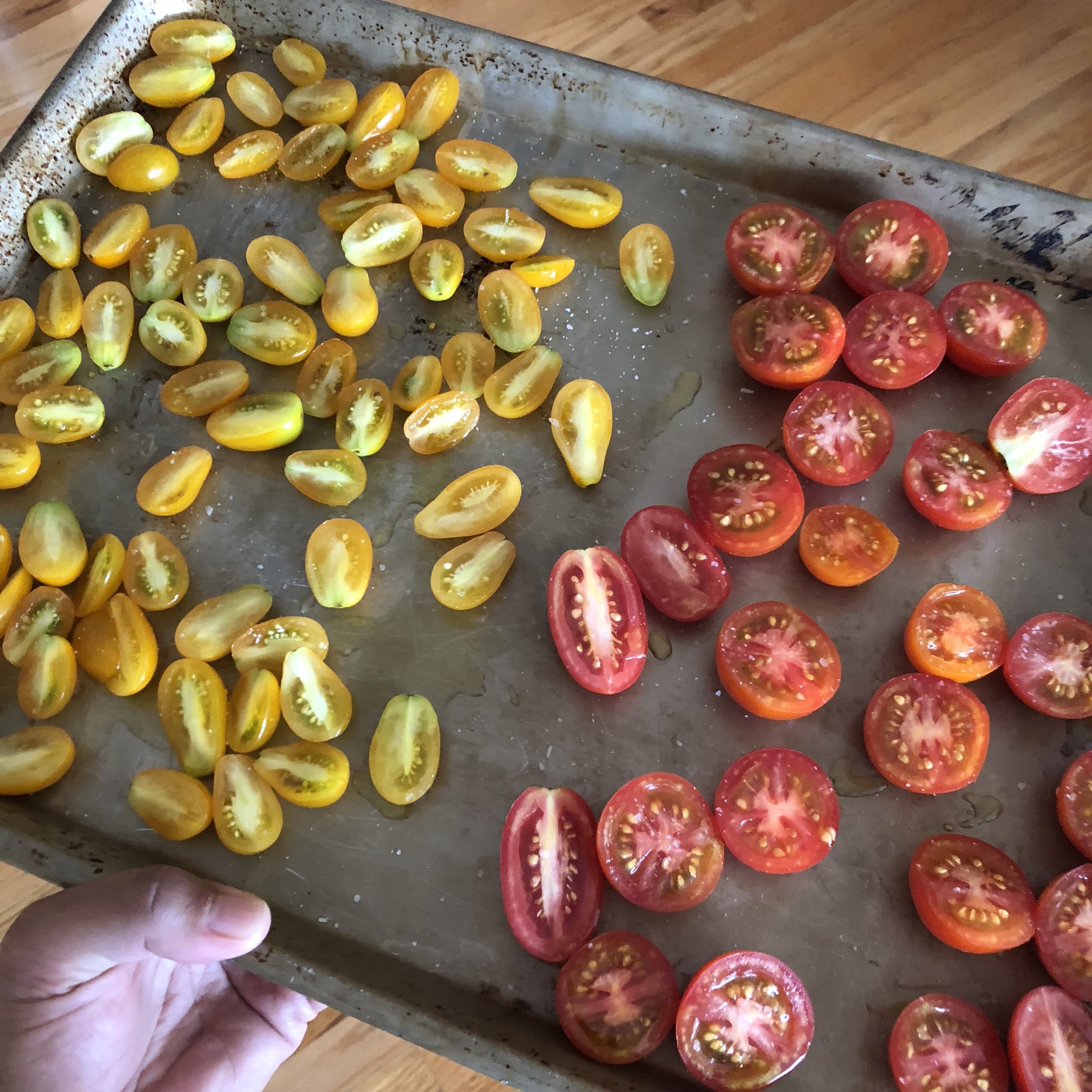
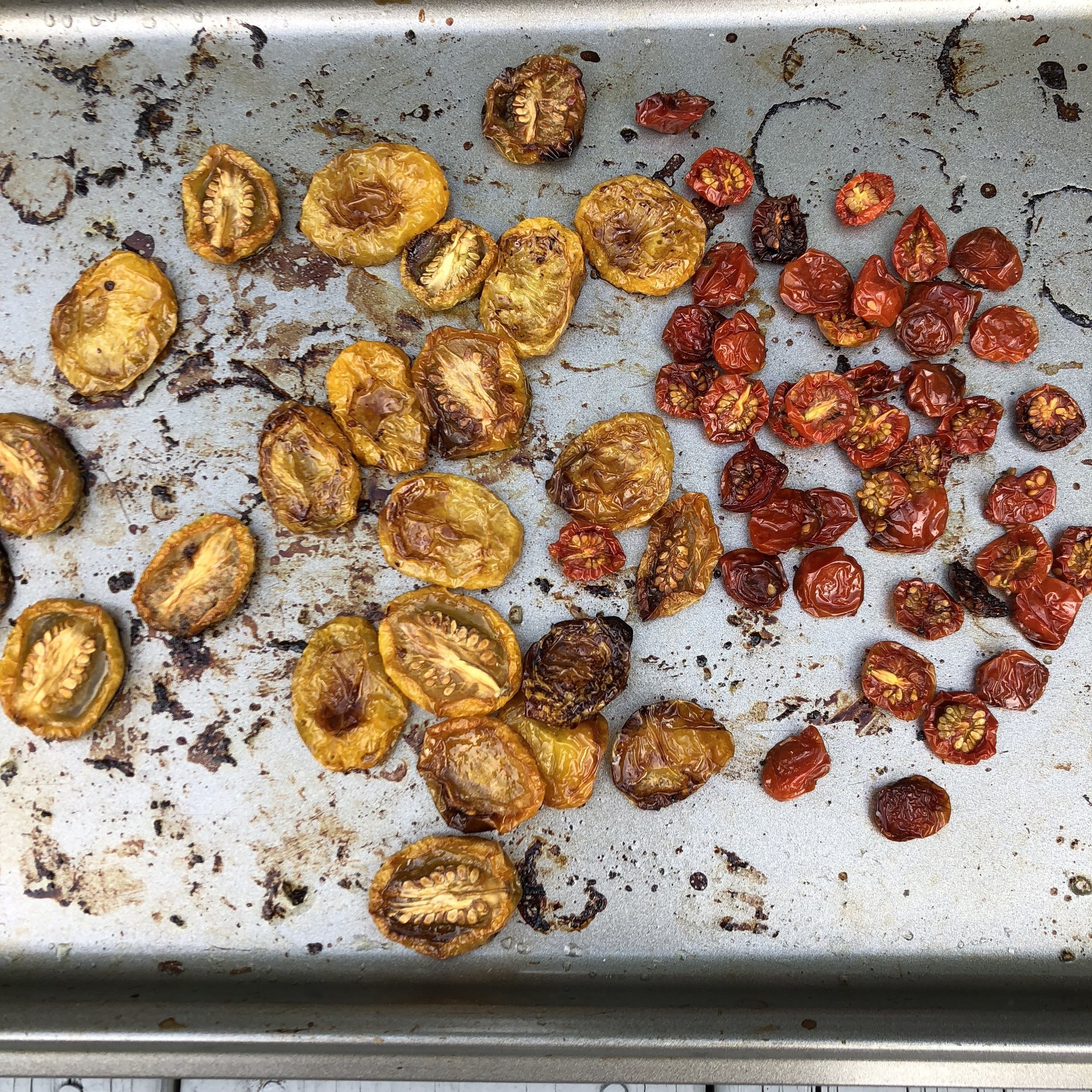









![Blend about 1/3 of the fresh corn kernels with stock (or water) before adding to chowder to create a sweet and creamy base. (see step 5)[yup, my dad's jar of corks in the background]](https://images.squarespace-cdn.com/content/v1/596a6bb986e6c0107436ffae/1534727293924-VIY7M9H2L1MKT1KIX56K/fullsizeoutput_40d0.jpeg)




